We use cookies on this site to enhance your user experience. If you continue to browse you accept the use of cookies on our site. See our Cookie Policy for more information.
- Media & PR
- Meetings & Events
- School Groups
- Travel Trade
- Select Language 简体中文 繁體中文(香港) 繁體中文(臺灣) India (English) Bahasa Indonesia 한국어 ภาษาไทย Tiếng Việt Singapore (English) Philippines (English) Malaysia (English) Australia/New Zealand (English) Français Deutsch Italiano Español United Kingdom (English) Nordic countries(English) Canada (English) Canada (Français) United States (English) Mexico (español) Português العربية Japan(日本語) Global (English)
- India (English)
- Bahasa Indonesia
- Singapore (English)
- Philippines (English)
- Malaysia (English)
- Australia/New Zealand (English)
- United Kingdom (English)
- Nordic countries(English)
- Canada (English)
- Canada (Français)
- United States (English)
- Mexico (español)
- Global (English)
- Fujiyoshida
- Shimonoseki
- Ishigaki Island
- Miyako Island
- Kerama Island
- Tokyo Island
- Koka & Shigaraki
- Hida Takayama
- Ginza, Nihonbashi
- Beppu & Yufuin (Onsen)
- Ginzan Onsen
- Nagasaki Islands

- Kumano Kodo
- Shikoku Karst
- Amami Oshima
- Hachimantai
- Omihachiman
- Aizuwakamatsu

- Diving in Japan
- Skiing in Japan
- Seasonal Flowers in Japan
- Sustainable Outdoors
- Off the Beaten Track in Japan
- Scenic Spots
- World Heritage
- Home Stays & Farm Stays

- Japanese Gardens
- Japanese Crafts
- Temple Stays
- Heritage Stays
- Festivals and Events
- Theater in Japan
- Japanese Tea Ceremony
- Cultural Experiences in Japan
- Culture in Japan

- Local Cuisine Eastern Japan
- Local Cuisine Western Japan
- Local Street Food
- Japan's Local Ekiben
- Japanese Whisky
- Vegetarian and Vegan Guide
- Sushi in Japan Guide
- Japanese Sake Breweries

- Art Museums
- Architecture
- Performing Arts
- Art Festivals
- Japanese Anime and Comics
- Japanese Ceramics
- Local Crafts

- Scenic Night Views
- Natural Wonders
- Theme Parks
- Samurai & Ninja
- Iconic Architecture

- Wellness Travel in Japan
- Japanese Ryokan Guide
- A Guide to Stargazing in Japan
- Relaxation in Japan
- Forest Bathing (Shinrin-yoku)

- Experiences in Japan
- Enjoy my Japan
- National Parks
- Japan's Local Treasures
- Japan Heritage
- Snow Like No Other
- Wonder Around Japan

Visa Information
- Getting to Japan
Airport Access
- COVID-19 Practical Information
- Anime Tourism
- Countryside Stays
- Sustainable Travel
- Accommodation
- Sample Itineraries
- Travel Agents
- Deals and Tours

- Traveling by Rail
- How to Travel by Train and Bus
- JR Rail Passes
- Train Passes and Discounted Tickets
- Scenic Railways
- Renting a Car
- Yokohama Cruise Port Access
- Travel Brochures
- Useful Apps
- Accommodation Types
- Online Reservation Sites
- Eco-friendly Accommodation
- Luxury Accommodations
- Traveling With a Disability
- Hands-free Travel
- How to Book a Certified Tour Guide
- Volunteer Guides
- Tourist Information Center

- Japanese Manners
- Sustainable Travel in Japan
- Spring in Japan
- Summer in Japan
- Autumn in Japan
- Winter in Japan
- Seasonal Attractions
- Monthly Events Calendar
- Cherry Blossom Forecast
- Autumn Leaves Forecast

- Japan Visitor Hotline
- Travel Insurance in Japan
- Japan Safe Travel Information
- Accessibility in Japan
- Vegetarian Guide
- Muslim Travelers
- Safety Tips

- All News & Blog
- Travellers Blog
- Guides to Japan
- Stories of Japan
- The Other Side of Japan
- Media Releases
- JAPAN Monthly Web Magazine

My Favorites
${v.desc | trunc(25)}

Planning a Trip to Japan?
Share your travel photos with us by hashtagging your images with #visitjapanjp
Travel Japan - The Official Japan Guide
STORIES OF JAPAN
There’s always something to discover
Autumn Leaves Forecast 2023
Discover Japan during the beautiful season of autumn leaves
Go Beyond Japan’s Major Cities: Hokuriku Shinkansen Extension in 2024
Sakura and Beyond: Famous Japanese Flowers to Check Out in 2024
THE LUXURY SIDE OF JAPAN
Unique luxury experiences
ENJOY MY JAPAN
Discover the diversity of Japan
An essential guide to this culinary hot spot.
SUSTAINABLE TRAVEL EXPERIENCES IN JAPAN
JAPAN ADVENTURE
Journey through the traditions and natural landscapes of Japan
JAPAN'S LOCAL TREASURES
Showcasing the beauty of local Japan
TOHOKU COLOURS
Experience the seasonal and cultural beauty of northeastern Japan
VIRTUAL BACKGROUNDS
Bring Japan to your video calls
Explore the National Parks of Japan
Through 360° VR Videos
Important notice.

Suggested Stories & Guides
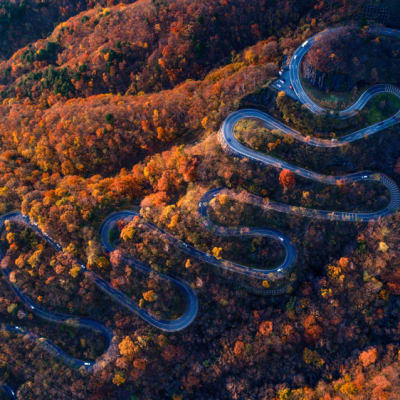
Travel Highlights
Popular places.
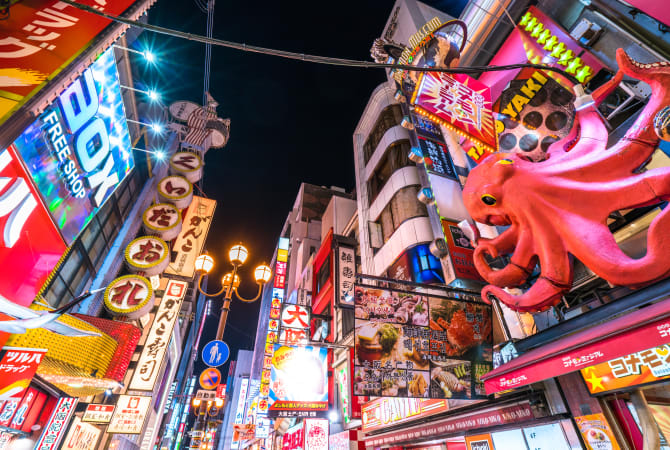
Explore by Interest
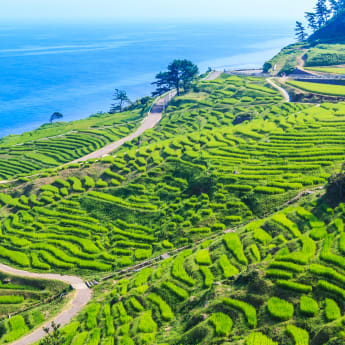
For First-Time Visitors
- Wi-Fi & Connectivity
- Weather & Geography
- IC Travel Cards
Where to Stay
- Luxury Stay
- Haneda Airport
- Narita Airport
- Osaka (KIX)
- Fukuoka Airport
Getting Around
- Shinkansen (Bullet Train)
- Luggage & Storage
Suggested Walks & Tours
- Tokyo 48 Hours
- Golden Route
- 2 Weeks in Japan
- Tour & Activities
Brochure Download
- Tours and Activities

Japanese Government Information
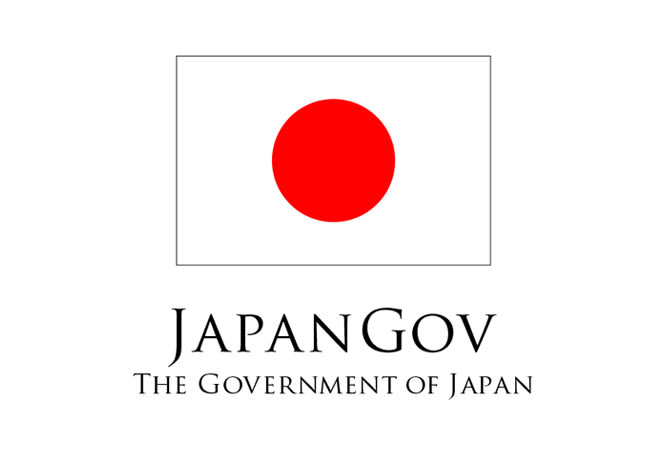
- JNTO Sydney
Please Choose Your Language
Browse the JNTO site in one of multiple languages
Understanding The Current Travel Restrictions From Japan To Australia
- Last updated Nov 08, 2023
- Difficulty Advanced
- Category United States
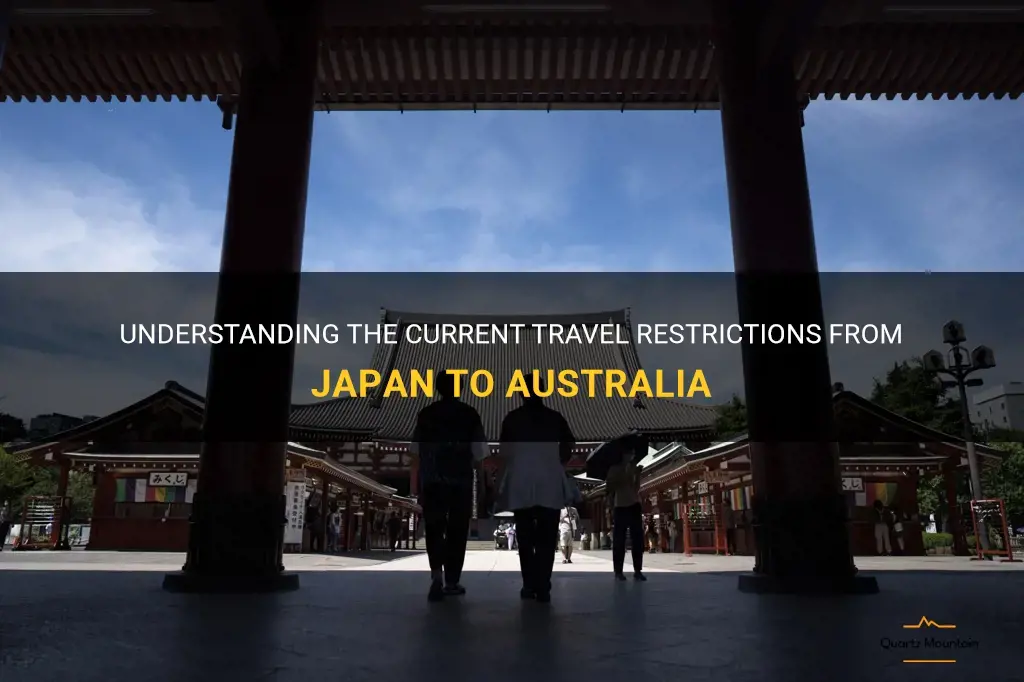
Are you dreaming of a trip to Australia, but worried about travel restrictions? Well, you're not alone! With the ongoing COVID-19 pandemic, many countries have implemented travel restrictions to keep their citizens safe. Japan and Australia, two popular travel destinations, have not been spared from these restrictions. In this article, we will explore the current travel restrictions from Japan to Australia and provide you with the latest information to help you plan your next adventure Down Under. So, let's dive in and navigate through the world of travel restrictions!
What You'll Learn
What are the current travel restrictions for individuals traveling from japan to australia, are there any quarantine requirements for travelers coming from japan to australia, are there any specific visa requirements or entry permits needed for japanese citizens traveling to australia, are there any direct flights available from japan to australia at the moment, are there any exceptions or special considerations for certain categories of travelers, such as australian citizens, permanent residents, or immediate family members of australian citizens or residents.

As the world continues to grapple with the ongoing COVID-19 pandemic, travel restrictions and guidelines have become a crucial aspect of travel planning. For individuals traveling from Japan to Australia, it is important to stay up-to-date with the current travel restrictions to ensure a smooth journey and compliance with the necessary regulations.
At present, Australia has implemented strict travel restrictions to curb the spread of COVID-19. These restrictions apply to individuals traveling from all countries, including Japan. The Australian government has imposed a travel ban on all non-residents and non-citizens entering the country, with very limited exceptions. This means that unless you are an Australian citizen, permanent resident, or an immediate family member of someone in Australia, you will not be allowed to enter the country.
For Japanese citizens who fall within one of the exceptions mentioned above, there are still additional requirements that must be met before traveling to Australia. These requirements include a mandatory 14-day quarantine period upon arrival in Australia. This quarantine period must be completed in a designated facility, such as a hotel, at the traveler's own expense.
Furthermore, individuals traveling from Japan to Australia are also required to provide a negative COVID-19 test result before boarding their flight. This test must be conducted within 72 hours of the scheduled departure time and must be a polymerase chain reaction (PCR) test. It is essential to consult the Australian embassy or consulate in Japan to ensure that you have the most up-to-date information on the specific testing requirements.
It is important to note that these restrictions and requirements are subject to change at any time, as the situation surrounding COVID-19 evolves. Therefore, it is crucial to stay informed by regularly checking the official government websites and consulting with relevant authorities before making any travel arrangements.
In addition to the travel restrictions imposed by the Australian government, it is also essential to be aware of any restrictions or guidelines put in place by the Japanese government for outbound travelers. These may include requirements for pre-departure testing, health declarations, and other necessary documentation. It is advisable to consult the Japanese embassy or consulate in Australia for the most accurate and up-to-date information on these requirements.
To summarize, individuals traveling from Japan to Australia currently face strict travel restrictions. Non-residents and non-citizens are not allowed to enter the country, except for limited exceptions. For those who do meet the exceptions, a mandatory 14-day quarantine period and a negative COVID-19 test result are required. It is crucial to regularly check official government websites and consult with relevant authorities for the most up-to-date information on travel restrictions and requirements. By staying informed and following the necessary guidelines, travelers can ensure a safe and smooth journey to Australia.
Exploring Tobago: Updates on Travel Restrictions and Requirements
You may want to see also
As travel restrictions begin to ease around the world, many people are wondering what the requirements are for travelers entering new countries. In the case of travelers coming from Japan to Australia, there are indeed quarantine requirements in place.
Australia has been successful in managing and controlling the spread of COVID-19 within its borders, and part of this success can be attributed to their strict quarantine measures for incoming travelers. These measures are intended to prevent the importation of new cases and to ensure the safety of the Australian population.
If you are traveling from Japan to Australia, you will be required to undertake a period of mandatory quarantine upon arrival. The specific requirements may vary depending on the state or territory you are entering, but generally, you will be required to go into quarantine for a period of 14 days.
During this quarantine period, you will be required to stay at a designated quarantine facility, such as a hotel or a government-provided accommodation. You will be responsible for covering the costs of your stay at the quarantine facility. The facilities are well-equipped and provide all the necessary amenities to ensure your comfort during the quarantine period.
While in quarantine, you will not be permitted to leave your room unless for approved medical reasons or emergencies. You will be provided with regular meals and have access to telecommunication services, allowing you to stay connected with family and friends.
To ensure compliance with the quarantine requirements, you will be subject to regular health checks by qualified medical professionals. These checks may include temperature testing and symptom screenings to detect any potential cases of COVID-19.
It is important to note that failure to comply with the quarantine requirements can result in penalties, including fines and possible incarceration. Quarantine measures are taken very seriously in Australia, as they play a crucial role in preventing the spread of the virus and protecting the community.
While undertaking the quarantine period may seem like an inconvenience, it is a necessary step to ensure the safety and well-being of both travelers and the wider community. By following the quarantine requirements, you are contributing to the ongoing efforts to keep Australia COVID-free.
In conclusion, travelers coming from Japan to Australia are required to undergo a period of quarantine upon arrival. This quarantine period typically lasts for 14 days and travelers are required to stay at designated quarantine facilities. Compliance with the quarantine requirements is essential to prevent the importation of new COVID-19 cases and to protect the Australian population.
Exploring the Impact of Travel Restrictions on New Orleans Tourism
Japanese citizens who are planning to travel to Australia may be wondering about the visa requirements and entry permits they need to obtain before their trip. The Australian government has specific guidelines in place regarding visas and permits for visitors from different countries, including Japan. Here, we will delve into the details of these requirements and provide a step-by-step guide on how Japanese citizens can ensure a smooth entry into Australia.
Firstly, it's important to note that Japanese citizens are eligible for the eVisitor visa when visiting Australia for tourism, business activities, or visiting family and friends. The eVisitor visa is free and allows multiple entries into Australia for up to three months per visit. It is valid for up to 12 months from the date of issue. This means that Japanese citizens can enter Australia multiple times during the 12 month period, as long as they do not exceed three months per visit.
To apply for the eVisitor visa, Japanese citizens can do so online through the Department of Home Affairs website. The application process is relatively simple and involves filling out an online form with personal information, passport details, and the purpose of the visit. It is important to ensure all information provided is accurate and up-to-date to avoid any complications.
Once the application is submitted, the Department of Home Affairs will process it and notify the applicant of the outcome. It is recommended to apply for the eVisitor visa well in advance of the planned travel dates to allow for processing time. In most cases, the visa is processed and granted within a few days, but it is always best to plan ahead to avoid any last-minute issues.
It is important to note that the eVisitor visa does not allow for employment or studying in Australia. If a Japanese citizen intends to work or study in Australia, they will need to apply for the appropriate visa or permit, such as the Temporary Work (Skilled) visa or the Student visa, depending on their circumstances.
In some cases, Japanese citizens may need to obtain an entry permit, known as the Australian Travel Declaration, before entering Australia. This is especially relevant during the COVID-19 pandemic, as travel restrictions and requirements may vary. The Australian Travel Declaration can be completed online through the Department of Home Affairs website and must be done at least 72 hours before departure to Australia.
When completing the Australian Travel Declaration, Japanese citizens will need to provide information regarding their travel history, health status, and quarantine requirements. It is important to check the latest travel advice and updates from the Australian government to ensure compliance with any COVID-19 related requirements.
In conclusion, Japanese citizens traveling to Australia for tourism, business, or visiting family and friends can apply for the eVisitor visa. The application process is straightforward, and the visa allows multiple entries for up to three months per visit within a 12 month period. It is important to apply for the visa in advance and ensure all information provided is accurate. Additionally, during the COVID-19 pandemic, Japanese citizens may need to complete the Australian Travel Declaration before their trip. As always, it is recommended to check the latest travel advice and requirements from the Australian government before traveling.
How San Francisco's Travel Restrictions Are Affecting Air Travelers
As of the current situation, there are limited direct flights available from Japan to Australia. Due to the ongoing global pandemic, travel restrictions and flight schedules have been significantly impacted. However, some airlines do operate direct flights between the two countries, although the frequency and availability may vary.
Several airlines offer direct flights between major cities in Japan, such as Tokyo and Osaka, and various airports in Australia, including Sydney, Melbourne, and Brisbane. However, it is essential to note that these flights may not operate daily, and the schedules could change at short notice.
For example, Japan Airlines (JAL) currently operates direct flights between Tokyo and Sydney. These flights typically operate several times a week, with varying departure and arrival times. Similarly, All Nippon Airways (ANA) also offers direct flights between Tokyo and Sydney, with multiple flights per week.
Qantas, the national carrier of Australia, also operates direct flights between Tokyo and Sydney, as well as Tokyo and Melbourne. These flights usually operate several times a week, providing convenient options for passengers traveling between Japan and Australia.
It's important to mention that before planning any travel, it is crucial to check the latest travel advisories, entry requirements, and restrictions imposed by both Japan and Australia. The COVID-19 pandemic has led to constantly changing travel regulations, including mandatory quarantine and testing upon arrival.
Additionally, airlines have implemented stringent health and safety protocols to ensure the well-being of passengers and crew members. These protocols may include mandatory mask-wearing, temperature checks, increased cleaning and disinfection procedures, and reduced in-flight services.
To book a direct flight from Japan to Australia, it is recommended to check the websites of the airlines mentioned above or use online travel agencies that provide up-to-date flight information and booking services. It is advisable to book flexible tickets or consider travel insurance that covers potential disruptions or cancellations due to the evolving situation.
In conclusion, while there are limited direct flights available from Japan to Australia, some airlines still operate regular services between major cities. It is crucial to stay informed about the latest travel advisories and follow the necessary precautions to ensure a safe and comfortable journey.
Understanding LGA Travel Restrictions: What You Need to Know
As of the time of writing, there are certain exceptions and special considerations for certain categories of travelers entering Australia. These exceptions and special considerations apply to Australian citizens, permanent residents, and immediate family members of Australian citizens or residents.
Australian Citizens and Permanent Residents:
Australian citizens and permanent residents are allowed to enter Australia, but they must comply with the mandatory isolation and quarantine requirements upon arrival. They will need to complete a mandatory 14-day quarantine period at a designated facility or at home, depending on the state or territory they are entering. These individuals will also need to provide evidence of their citizenship or residency status upon arrival.
Immediate Family Members of Australian Citizens or Residents:
Immediate family members of Australian citizens or residents are also allowed to enter Australia. This includes spouses, dependent children, and legal guardians. However, these individuals must obtain an exemption to the travel restrictions before they can enter the country. They will need to provide proof of their relationship to an Australian citizen or resident and demonstrate that their travel to Australia is essential and urgent.
To request an exemption, immediate family members must apply for a visa online and provide the necessary documents to support their case. The Australian Border Force will then assess their application and determine whether an exemption will be granted. It is important to note that the exemption process can take some time, so it is advisable to apply well in advance of your intended travel date.
Once an exemption is granted, immediate family members will still need to comply with the mandatory quarantine requirements upon arrival. They will need to complete a 14-day quarantine period at a designated facility or at home, depending on the state or territory they are entering.
It is also worth noting that some states and territories in Australia have additional requirements and restrictions for travelers, even if they are exempt from the travel restrictions. For example, Victoria has implemented a "traffic light" system that categorizes countries into different risk levels. Travelers from different risk levels may have different quarantine and testing requirements.
In conclusion, there are exceptions and special considerations for Australian citizens, permanent residents, and immediate family members of Australian citizens or residents who wish to enter Australia. These individuals must comply with the mandatory quarantine requirements upon arrival and may need to obtain an exemption to the travel restrictions before they can enter the country. It is important to stay informed about the current travel restrictions and requirements, as they may change frequently due to the evolving COVID-19 situation.
Exploring International Travel Restrictions in Minnesota: What You Need to Know
Frequently asked questions.
As of April 2021, the Australian government has imposed strict travel restrictions for individuals entering the country from Japan. Only Australian citizens, permanent residents, and their immediate family members are allowed to enter Australia. Other individuals may be eligible for travel based on humanitarian or essential reasons, but they must apply for an exemption before traveling.
Yes, all travelers entering Australia from Japan are required to undergo mandatory quarantine for 14 days in a designated facility. This is to ensure the safety of the community and prevent the spread of COVID-19. The cost of the quarantine is generally borne by the traveler, and they must adhere to all quarantine guidelines and instructions provided by the authorities.
Currently, leisure travel for Japanese tourists to Australia is restricted due to the ongoing pandemic. Only individuals with compelling or essential reasons are permitted to travel to Australia from Japan. It is advised to check the latest travel updates and contact the Australian embassy or consulate in Japan for specific travel requirements.
There are limited direct flights operating between Japan and Australia due to the travel restrictions and reduced demand caused by the pandemic. It is recommended to check with airlines for the latest flight schedules and availability. Travelers may also need to transit through a third country and comply with any transit or entry requirements in that country.
Apart from a valid passport, travelers from Japan to Australia are required to present a negative COVID-19 test result taken within 72 hours before their flight departure. Additionally, all travelers must complete an online travel declaration form and comply with any screening or health measures implemented by Australian authorities upon arrival. It is essential to check the specific requirements and guidelines before traveling to Australia.

- Annie Rangel Author Editor Reviewer

- Elani Piper Author Editor Reviewer
It is awesome. Thank you for your feedback!
We are sorry. Plesae let us know what went wrong?
We will update our content. Thank you for your feedback!
Leave a comment
United states photos, related posts.

The Best Materials to Safely Pack and Protect Your Dishes
- Mar 07, 2024

12 Fantastic Pet-Friendly Activities to Explore in Branson MO
- Jun 06, 2023

Discover the Best Activities in Jurmala
- Jun 23, 2023
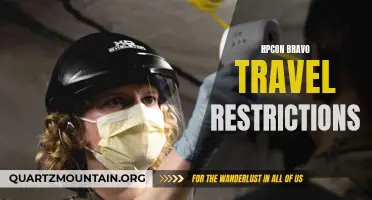
Understanding the Travel Restrictions of HPCON Bravo: What You Need to Know
- Sep 11, 2023

The Essential Skiing Gear to Pack for a Canadian Winter Adventure
- Jan 22, 2024
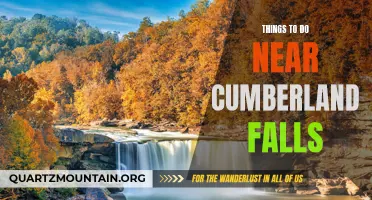
11 Amazing Things to Do Near Cumberland Falls
- May 07, 2023

Search Smartraveller

Latest update
Exercise normal safety precautions in Japan.
Higher levels apply in some areas.
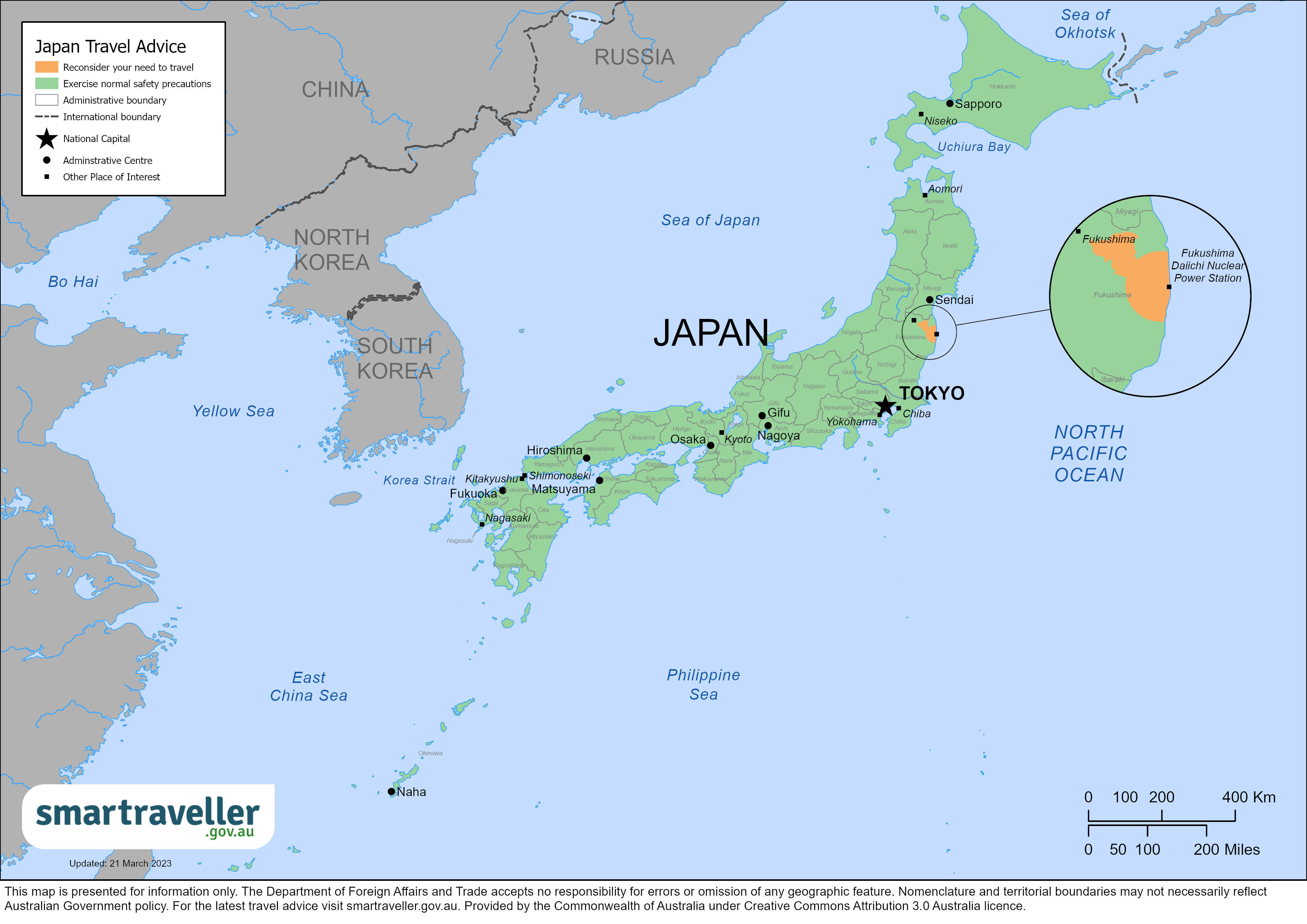
Japan (PDF 460.84 KB)
Asia (PDF 2.21 MB)
Local emergency contacts
Fire and rescue services, medical emergencies.
Call 110 or contact the local police at the nearest police station.
For Tokyo English-speaking Police, call 3501 0110 (Monday to Friday 8:30am to 5:15pm).
Advice levels
Reconsider your need to travel to the restricted areas near the Fukushima Dai-ichi nuclear power plant.
- Japan is prone to earthquakes and tsunamis. Japanese authorities have detailed plans to respond to natural disasters. In an earthquake, follow the advice of local authorities and emergency signage. Move to higher ground immediately if you're in a coastal region after a major earthquake. Check the Disaster Prevention Portal for more information.
- All major disaster warnings are published by the Japan Meteorological Agency . We recommend downloading NHK’s smart phone application to keep up to date with a natural disaster or other emergency alerts.
- A series of earthquakes occurred in Ishikawa Prefecture in Central Japan on and after 1 January 2024. Some infrastructure may remain impacted. Follow the advice of local authorities if travelling to affected areas.
- Regional tensions and the security situation, including with North Korea, could worsen with little warning. Tensions, which may affect Japan, could arise because of missile tests by North Korea. For advice see Japan's Civil Protection Portal Site .
- Japan has a low crime rate. Petty theft can happen, like bag snatching at popular tourist attractions. There's a risk of crime in bars and nightclubs. Crimes include overcharging, credit card fraud, forced withdrawal of large amounts of cash at ATMs, drink spiking and assault. Avoid taking large amounts of money and be vigilant in carrying your debit/credit card) when in bars or clubs and at parties.
Full travel advice: Safety
- Japan has strict rules about bringing medicine into the country, including some ingredients in ADHD and cold and flu medication. If you plan on bringing in medication, check if it's legal before you travel. See the Ministry of Health, Labour and Welfare website for more information.
- Restricted zones exist around the Fukushima Dai-ichi nuclear power plant. The 2011 earthquake caused the release of lethal radiation. Radiation levels in most parts of Japan, including Tokyo, are within the normal range.
- Medical facilities are of a high standard. You can find English-speaking medical staff in most major cities. You may need to pay upfront before you're treated.
Full travel advice: Health
- You must carry your passport (or Japanese residency card) with you at all times.
- Don't use or carry illegal drugs. Authorities can charge you if they find trace amounts of illegal drugs in your blood or urine.
- Japanese family law, including divorce and child custody, is very different to Australian law. For example, joint custody of a child after divorce is not a legal option, and there are limits to access for a non-custodial parent. The Family Courts in Japan generally consider that it is in a child's best interests for them to remain in their "usual place of residence". Courts, therefore, usually give sole custody to the parent who has taken care of the child most recently. If you're involved in custody or other family disputes, it is important to seek legal advice about your options both in Japan and in Australia. We have produced some general information about custody, child abduction and parental rights.
- Some employment agents mislead and encourage foreigners to work in Japan without the correct paperwork. If you want to work in Japan, verify the work offered and get the correct visa. Get legal advice before signing a contract.
- Japan has strict alcohol laws. The legal drinking age is 20. It's illegal to drive with any alcohol in your bloodstream. Allowing someone who has been drinking to drive is also illegal. Laws restrict alcohol consumption in specific areas on certain days, such as in Shibuya around Halloween night (31 October) and New Year's Eve. Smoking on the street is illegal in Tokyo and some other cities.
Full travel advice: Local laws
- Australians are eligible for Japan's visa exemption scheme for short-stay tourism and business travel. You don't need a visa to travel to Japan for up to 90 days. Entry and exit conditions can change at short notice. It is your responsibility to verify visa requirements from the nearest embassy or consulate of Japan.
- If you're travelling for any other reason, contact your nearest Japanese embassy or consulate to check if you need a visa, especially if you plan to work in Japan. Penalties may apply if you work in Japan on a tourist visa.
- It's dangerous to climb Mount Fuji from September to June.
- You can drive for up to 1 year with an Australian driver's licence and an International Driving Permit. If you're staying longer, you will need to obtain a local licence. Heavy snowfalls and ice in winter can make driving dangerous. It's illegal to drive with any alcohol in your bloodstream.
Full travel advice: Travel
Local contacts
- The Consular Services Charter details what we can and can't do to help you overseas.
- For consular help, contact the Australian Embassy in Tokyo or the Consulate-General in Osaka .
- To stay up to date with local information, follow the Embassy’s social media accounts
Full travel advice: Local contacts
Full advice
Terrorism is a threat worldwide.
Japan has security measures in place at key facilities, such as:
- public transport
- public event venues
- entry ports
More information:
- Terrorist threats
Regional Threats
Regional tensions and the security situation, including with North Korea, could worsen with little warning. Tensions, which may affect Japan, could arise because of missile tests by North Korea.
The Japanese Government has confirmed an increase in missile launch activity from North Korea towards Japan. At times, 'take shelter' alerts have been issued in some parts of Japan.
To stay safe:
- be alert to developments
- review the Civil Protection Portal Site advice from the Japanese Cabinet Secretariat for National Security Affairs and Crisis Management
- follow the instructions of local authorities
- check NHK World for the latest information
Japan has a low crime rate. Petty theft can happen, like bag snatching at popular tourist attractions from time to time.
There's a risk of crime in bars and nightclubs, especially in the Roppongi and Shinjuku (Kabuki-cho) entertainment areas of Tokyo. Both men and women have been targeted. You may be targeted with:
- overcharging
- fraudulent credit card charges
- forced withdrawal of large amounts of cash at ATMs
- drink spiking
- illegal drugs
You may be served drinks with higher alcohol content than normal. Some victims have woken in unknown places and discovered high credit card charges. Other victims have been taken to ATMs and forced to withdraw a large sum of cash while under the effects of drink spiking.
In these situations, you may find it hard to get a police report for your bank and travel insurer.
- never leave your drink unattended, and be cautious of accepting drinks from strangers or recent acquaintances
- don't take large amounts of cash to parties, bars, clubs or entertainment districts and be vigilant in carrying your debit/credit card
- Partying overseas
Cyber security
You may be at risk of cyber-based threats during overseas travel to any country. Digital identity theft is a growing concern. Your devices and personal data can be compromised, especially if you’re connecting to Wi-Fi, using or connecting to shared or public computers, or to Bluetooth.
Social media can also be risky in destinations where there are social or political tensions, or laws that may seem unreasonable by Australian standards. Travellers have been arrested for things they have said on social media. Don't comment on local or political events on your social media.
More information:
- Cyber security when travelling overseas
Mountain climbing and trekking
Trekking and mountaineering can be dangerous. Register your plans with local police before you go into the mountains, and take an emergency locator beacon with you.
Every year, a number of people die while trying to climb Mount Fuji.
Japanese Emergency Services warn against climbing from September to June when it's most dangerous. Check the official Mount Fuji Climbing website for each trail's climbing season dates.
Check your travel insurance covers you for extreme activities, such as mountain climbing.
Hikers and other travellers may encounter bears in parts of rural Japan. There have been incidents of fatal bear attacks. Some prefectural governments provide safety advice regarding bears.
If you plan to hike or camp in rural and mountainous areas of Japan:
- follow local safety advice and pay attention to
- warning notices
Snow sport safety
Back-country skiing (off-piste) and snowboarding is dangerous in most parts of Japan. You should stay within the boundaries of the ski resort.
Take an emergency locator beacon with you if you plan to explore other areas of the mountains.
Many travellers have suffered serious head injuries they could've prevented by wearing the right equipment.
Check your insurance policy covers you for snow sports.
Local ski resorts govern rules in each ski region. You can be arrested and detained for unruly behaviour.
If you're skiing in Japan:
- use a helmet and protective gear
- learn local rules and get weather updates from your hotel, a local tourism centre or the local ski resort
- obey local ski region rules
- only visit areas that local authorities mark as safe
- know what your travel insurance policy covers you for
Climate and natural disasters
A series of earthquakes occurred in Ishikawa Prefecture in Central Japan on and after 1 January. Some infrastructure may remain impacted. Exercise caution and follow local authorities' advice if travelling to affected areas.
Japan experiences natural disasters and severe weather , including:
- volcanic eruptions
- earthquakes
In an emergency, consular help may be severely limited.
Be prepared to deal with emergencies by:
- maintaining a basic emergency supply kit
- securing your passport in a safe, waterproof place
- follow the advice of local authorities, emergency services and local media updates. Make sure you react to any evacuation orders.
Disaster preparation
The Japan National Tourism Organization provides disaster preparation Safety Tips for visitors to Japan and other useful emergency information.
In any emergency or crisis, it's important to keep in contact with family and friends if possible.
The following stations broadcast emergency information in English:
- US Armed Forces station (810 AM)
- Inter FM (76.1 FM) in Tokyo
Japanese public broadcaster NHK provides a free smartphone app , which can be set to receive emergency notifications in English. This includes earthquake, tsunami, volcanic eruption, typhoon, and missile warnings.
If there's a natural disaster:
- follow local authorities' advice
- react to any evacuation orders
- monitor the media, other local information sources, and the Global Disaster Alert and Coordination System
- keep in contact with family and friends
Earthquakes and tsunamis
There's a constant risk of earthquakes and tsunamis.
The Japan Meteorological Agency provides information in English about earthquakes and tsunamis.
Know the dangers of a major earthquake and the emergency plan information in your area. Know where your local shelter is. This information is available from local or prefectural government offices, such as the Tokyo Metropolitan Government Disaster Prevention .
Local authorities are responsible during a crisis for helping people living or travelling within their jurisdictions.
If there's an earthquake:
- follow the advice of local authorities
- check the Japan Meteorological Agency for earthquake and tsunami information
- move to higher ground straight away if you're in a coastal region
Typhoons and severe weather
The typhoon season is from May to November, with most activity between July and September.
Local authorities broadcast current typhoon information through the local media and the Japan Meteorological Agency website.
If there's a typhoon approaching:
- check the latest typhoon information from the Japan Meteorological Agency’s website
- be alert to landslide risk areas
If there is heavy rain, stay indoors. If necessary, evacuate to a place on the second floor or higher. Find out the location of your nearest evacuation shelter and move there when safe to do so.
Keep away from areas with:
- steep hills at risk of landslides
- flooded streets
Be careful of fallen electrical lines.
Japan has 110 active volcanoes.
The Japan Meteorological Agency has a list of the latest volcano warnings.
If you plan to visit a volcanic area:
- be aware of alert levels, which can change at short notice
Winter weather
Parts of Japan experience heavy snowfalls and extremely low temperatures in winter.
Conditions can change suddenly.
Each year, people are injured or killed in snow-related incidents, including:
- motor vehicle accidents
- ice falling from roofs
- prolonged exposure to extreme cold
- ski accidents
Walking alone or under the effects of alcohol, or straying from marked trails, can be fatal.
Avalanches are common and heavy snowstorms can create deep powder snow drifts.
Travel insurance
Get comprehensive travel insurance before you leave.
Your policy needs to cover all overseas medical costs, including medical evacuation. The Australian Government won't pay for these costs.
If you are travelling while pregnant, confirm that your policy covers both your pregnancy and your baby in the event of a premature birth. Medical services for premature babies can cost over $A 150,000. See the advice for pregnant travellers page for more information.
If you can't afford travel insurance, you can't afford to travel. This applies to everyone, no matter how healthy and fit you are.
If you're not insured, you may have to pay many thousands of dollars up-front for medical care.
- what activities and care your policy covers
- that your insurance covers you for the whole time you'll be away
Physical and mental health
Consider your physical and mental health before you travel, especially if you have an existing medical condition.
See your doctor or travel clinic to:
- have a basic health check-up
- ask if your travel plans may affect your health
- plan any vaccinations you need
Do this at least 8 weeks before you leave.
If you have immediate concerns for your welfare, or the welfare of another Australian, call the 24-hour Consular Emergency Centre on +61 2 6261 3305 or contact your nearest Australian Embassy, High Commission or Consulate to discuss counselling hotlines and services available in your location.
Different environments, unfamiliar customs and language barriers may worsen existing mental health conditions. They may also trigger new issues.
Mental health treatment and services can differ to those in Australia.
If you need counselling services in English while in Japan:
- call TELL Lifeline (+81 3) 5774 0992
- call TELL Counselling (+81 3) 4550 1146
- General health advice
- Healthy holiday tips (HealthDirect Australia)
Not all medication available over the counter or by prescription in Australia is available in other countries. Some may even be considered illegal or a controlled substance, even if prescribed by an Australian doctor.
Japan has strict rules about bringing medication into the country. This affects both medication imports and medication you carry for personal use.
There are 4 categories (PDF 250 KB) of medicine. These are:
- psychotropic
You may need a permit or certificate to take medication into Japan. This will depend on the medication's classification, name and quantity.
Some medication is banned, including:
- the stimulant dexamphetamine, used to treat ADHD
- pseudoephedrine, found in some cold and flu tablets
Authorities could detain you if you're found with them.
For narcotic medications, including codeine, morphine and oxycodone, apply for a Narcotic Certificate. If you don't have this certificate when you enter Japan, authorities may confiscate the medication.
If you plan to bring medication, check if it's legal in Japan. Take enough legal medication for your trip. See the Ministry of Health, Labour and Welfare for more information.
Carry a copy of your prescription and a letter from your doctor stating:
- what the medication is
- your required dosage
- that it's for personal use
- Bringing medication into Japan
Health risks
Restricted areas exist around the Fukushima Dai-ichi nuclear power plant. The 2011 earthquake caused the release of lethal radiation. Radiation levels in almost all parts of Japan, including Tokyo, are within the normal range.
Monitor advice by the Japanese Government . There are ID checks points into the Restricted Areas . Do not enter without permission.
The Australian Radiation Protection and Nuclear Safety Agency (ARPANSA) provides details on radiation in Japan. ARPANSA has assessed the radiation levels in most parts of Japan, including Tokyo, to be within the normal range.
- Ministry of Health, Labour and Welfare
- Ministry of Economy, Trade and Industry
- Nuclear Regulation Authority
Insect-borne diseases
Japanese encephalitis can occur in Japan's rural areas. Get vaccinated against Japanese encephalitis before you travel.
To protect yourself from disease:
- make sure your accommodation is insect-proof
- use insect repellent
- wear long, loose, light-coloured clothing
Measles and rubella
Measles and rubella cases have been reported in Japan in recent years.
Make sure your vaccinations are up to date before you travel.
- Infectious diseases
- Measles immunisation service
- Rubella immunisation service
Medical care
Medical facilities.
Medical facilities are of a high standard. You can find medical facilities with English-speaking staff in most major cities, however, you may have difficulties finding English-speaking medical staff in some parts of Japan.
Medical care in Japan can be expensive. You may need to pay up-front or give a guarantee that you'll cover costs before you're treated.
The Japan National Tourism Organization lists hospitals with English and other foreign language-speaking staff.
There are many hospitals with decompression chambers in areas where diving is popular.
Medical information for Japan
You're subject to all local laws and penalties, including those that may appear harsh by Australian standards. Research local laws before travelling.
If you're arrested or jailed, the Australian Government will do what it can to help you within the scope of our Consular Services Charter , but we can't get you out of trouble or out of jail.
See the Australian Embassy Tokyo website for more information about arrests in Japan.
Be aware that you won't be allowed to make a phone call if you are arrested in Japan. You can also be detained for up to 23 days without any formal charge.
Authorities can arrest and charge you if they find trace amounts of illegal drugs in your blood or urine.
- Carrying or using drugs
- Tokyo Metropolitan Government
Japanese family law, including divorce and child custody, is very different to Australian law. For example, joint custody of a child after divorce is not a legal option, and there are limits to access for a non-custodial parent. The Family Courts in Japan generally consider that it is in a child’s best interests for them to remain in their “usual place of residence”. Courts therefore usually give sole custody to the parent who has taken care of the child most recently.
If you're involved in custody or other family disputes, consult a lawyer before you leave Australia or if you are already in Japan. We have produced some general information about custody, child abduction and parental rights.
Australia and Japan are both parties to The Hague Convention on the Civil Aspects of International Child Abduction.
If you're concerned that your child has been wrongfully removed to or detained in Japan, contact the Attorney-General's Department in Australia.
- Travelling with children
Employment law
Some employment agents may mislead and encourage foreigners to work in Japan without:
- the correct visa
- financial arrangements in place
This could leave you open to exploitation and prosecution.
Authorities have arrested Australians for working in the entertainment industry while in Japan on tourist visas.
If you want to travel to Japan for work:
- check the true nature of the work offered
- get the correct visa before arriving in Japan
- get legal advice before signing any contract
Living or working overseas
Police powers
Police can stop you on the street, demand identification and search you and your belongings.
If you're in a public place, police can seize:
- knives longer than 5.5cm, including blades and penknives
- any other weapons or things you could use as weapons
- any item they reasonably suspect you stole or have unlawfully
If they find any of these items on you, it’s likely that police will detain you.
If you're arrested, police can detain you for up to 23 days without charge, including for offences you might think are minor. Police might hold you for weeks or months while they investigate and undertake legal proceedings.
The initial police interview could last several hours. Police might record it in writing rather than electronically.
Under Japanese law, you can:
- remain silent
- access legal representation
- have an interpreter provided
However, in Japan police can question you without your lawyer present.
English interpreters may be substandard. Get a list of English-speaking lawyers around Japan from the Australian Embassy website.
If you're visiting Japan short-term as a tourist or for business, you must always carry your passport.
If you live in Japan, you must always carry your residence card.
It's illegal to:
- buy or drink alcohol if you're under 20 years old
- drive with any alcohol in your bloodstream
- allow someone under the influence of alcohol to drive a vehicle in which you're a passenger
The following activities are also illegal:
- importing or possessing firearms or other weapons without a permit
- smoking on the streets in some parts of Tokyo and other cities
- using UHF-CB radios (walkie-talkies) that don't meet Japanese standards, such as those purchased outside Japan
- resisting arrest or other actions that obstruct an official's duties
- flying a drone without a permit in many areas of Japan. Strict regulations apply under aviation laws
- having illegal drugs in your body (detected by urine testing).
Penalties for serious crimes, such as murder, include the death penalty.
Other sentences can include:
- heavy fines
- lengthy jail terms with hard labour
- deportation
Australian laws
Some Australian criminal laws still apply when you're overseas. If you break these laws, you may face prosecution in Australia.
- Staying within the law
Dual citizenship
Japan recognises dual nationality until the age of 20, after which the dual national must decide which nationality to retain.
- Dual nationals
Visas and border measures
Every country or territory decides who can enter or leave through its borders. For specific information about the evidence you'll need to enter a foreign destination, check with the nearest embassy, consulate or immigration department of the destination you're entering.
Australians are eligible for Japan's visa exemption scheme for short-stay tourism and business travel.
You don't need a visa if you're visiting for less than 90 days:
- as a tourist
- for a business trip or conference
- to visit friends and family
After entering under the visa exemption scheme, entry status cannot be changed to another visa status without departing and then re-entering Japan with the appropriate visa, such as a spouse, work, or study visa.
See the Embassy of Japan in Australia website for more information (including eligibility and required documents).
See the Ministry for Health, Labour and Welfare and the Ministry of Foreign Affairs websites for full details on entry requirements.
More information
- Immigration Bureau of Japan (Government of Japan)
- Customs and Tariff Bureau of Japan (Government of Japan)
Border measures
If you're transiting through Japan and your onward flight is leaving from a different airport, you must enter Japan. In order to transit between airports you will need to meet the entry requirements detailed above.
Please confirm any questions about transit directly with your airline.
Other formalities
You'll be photographed and fingerprinted electronically when you arrive, even if you're a permanent resident in Japan. If you refuse, immigration officers could deny you entry.
Travellers aged under 16 years, or who hold a diplomatic or official visa, are exempt.
If you'll be staying in Japan long term, you will need to register your details with the Immigration Bureau of Japan before arriving. Once you present the correct landing permission, you'll get a residence card. You must always carry it with you.
Ministry of Internal Affairs and Communication
Some countries won't let you enter unless your passport is valid for 6 months after you plan to leave that country. This can apply even if you're just transiting or stopping over.
Some foreign governments and airlines apply the rule inconsistently. Travellers can receive conflicting advice from different sources.
You can end up stranded if your passport is not valid for more than 6 months.
The Australian Government does not set these rules. Check your passport's expiry date before you travel. If you're not sure it'll be valid for long enough, consider getting a new passport .
Lost or stolen passport
Your passport is a valuable document. It's attractive to people who may try to use your identity to commit crimes.
Some people may try to trick you into giving them your passport. Always keep it in a safe place.
If your passport is lost or stolen, tell the Australian Government as soon as possible:
- in Australia, contact the Australian Passport Information Service .
- if you're overseas, contact the nearest Australian embassy or consulate .
If you lose your passport while travelling in Japan, try retracing your steps. Lost items are often handed into hotels, shop owners, train stations and police boxes.
It's important to look after your passport carefully. Passports that have gone through a washing machine or exposed to heavy rain will likely need to be replaced.
Passport with ‘X’ gender identifier
Although Australian passports comply with international standards for sex and gender, we can’t guarantee that a passport showing 'X' in the sex field will be accepted for entry or transit by another country. Contact the nearest embassy, high commission or consulate of your destination before you arrive at the border to confirm if authorities will accept passports with 'X' gender markers.
More information:
- LGBTQIA+ travellers
The Japanese currency is the Yen (JPY).
No restrictions apply to bringing foreign currency in or out of the country. Declare all amounts more than JPY 1 million or equivalent, when you arrive or leave. This covers all forms of currency, not only cash.
Cash is preferred in most places, but cards are becoming more widely used, especially in major cities.
Hotels accept major credit cards. Credit cards are still not widely accepted outside major cities.
Some ATMs at banks and convenience stores don't accept foreign cards.
Ask your bank if your cards will work in Japan.
Local travel
Check the Japan National Tourism Organization for emergency updates in English. The site also has advice on safe and hassle-free travel in Japan.
Fukushima and surrounding areas
There are some restricted areas around the Fukushima Dai-ichi nuclear power plant. This is due to the 2011 earthquake that resulted in the release of lethal radiation. The Japanese Government specifies these areas.
If you must stay overnight in restricted areas, ask local authorities for advice on how to minimise health risks.
Monitor and follow the advice from local authorities.
- Australian Radiation Protection and Nuclear Safety Agency (ARPANSA)
Travelling in Japan with a Disability
Japan has a number of resources available online with tips and advice on travelling around Japan as a tourist with a disability.
- Japan Travel – Traveling with a disability
- Japan Accessible Tourism Center
- Accessible Travel Japan
- Advice for travellers with a disability
Driving permit
To drive in Japan, you must hold either:
- a valid Japanese driver's licence, or
- a valid International Driving Permit (IDP) and a current Australian driver's licence
After 365 days, you need to get a Japanese licence.
Get your IDP before leaving Australia.
- Driving in Japan
- Tokyo Metropolitan Police Department

Road travel
Roads and vehicles are mostly well-maintained and traffic is orderly.
Vehicles travel is on the left-hand side like in Australia. In Japan it's illegal to drive with any alcohol in your bloodstream.
Heavy snowfalls and ice in the winter can make driving dangerous, especially if you are unaccustomed to driving in these conditions. Ensure your vehicle has the necessary equipment, including snow tyres, chains, and a dig-out kit. More information:
Driving or riding
Motorcycles
Check your travel insurance policy covers you for riding motorbikes.
Always wear a helmet.
It's safe to use taxis in Japan.
Taxi drivers usually open and shut the rear passenger doors remotely.
Public transport
Japan has modern and reliable rail and bus services.
Transport and getting around safely
DFAT doesn't provide information on the safety of individual commercial airlines or flight paths.
Check Japan's air safety profile with the Aviation Safety Network.
Passenger ferries depart from Tokyo (Yokohama) to many destinations across Japan as well as Asia.
Several international cruises stopover in Japan.
- Going on a cruise
Japan National Tourism Organization (JNTO)’s Tourist Information Center accepts telephone enquiries 24 hours a day. Call (+81 3) 3201 3331.
Contact your provider with any complaints about tourist services or products.
You can also contact the National Consumer Affairs Center of Japan’s Consumer Hotline for Tourists. Call (+81 3) 5449 0906 from Monday to Friday 10am to 4pm, excluding national holidays.
Emergencies
Depending on what you need, contact your:
- family and friends
- travel agent
- insurance provider
For Tokyo English-speaking Police, call (+81 3) 3501 0110 (Monday to Friday 8:30am to 5:15pm).
Always get a police report when you report a crime.
If a report is hard to get, seek advice from a lawyer or the English-speaking Police.
Your travel insurer should have a 24-hour emergency number.
Mental health services
Call TELL Lifeline services in English (+81 3) 5774 0992.
Call TELL Counselling services in English (+81 3) 4550 1146.
Living in Japan
English information on living in Japan is available from the:
- Japanese Cabinet Office
- Council of Local Authorities for International Relations
- Tokyo International Communications Committee
In Tokyo, for advice from the Foreign Residents' Advisory Centre , call (+81 3) 5320 7744.
Consular contacts
Read the Consular Services Charter for what the Australian Government can and can't do to help you overseas.
For consular assistance, contact the Australian Embassy in Tokyo or Australian Consulate-General in Osaka .
Australian Embassy, Tokyo
2-1-14 Mita, Minato-ku
Tokyo 108-8361
Phone: (+81 3) 5232 4111
Fax: (+81 3) 5232 4057
Website: japan.embassy.gov.au
Email: [email protected]
Facebook: Australian Embassy Japan
Instagram: @australianinjpn
X: @AustraliaInJPN
Check the Embassy website for details about opening hours and any temporary closures.
Australian Consulate-General, Osaka
16th Floor, Twin 21MID Tower
2-1-61 Shiromi, Chuo-ku
Osaka 540-6116
Phone: (+81 6) 6941 9271 or (+81 6) 6941 9448
Fax: (+81 6) 6920 4543
Website: japan.embassy.gov.au/tkyo/location_osaka.html
24-hour Consular Emergency Centre
In a consular emergency, if you can't contact an embassy, call the 24-hour Consular Emergency Centre on:
- +61 2 6261 3305 from overseas
- 1300 555 135 in Australia

Travelling to Japan?
Sign up to get the latest travel advice updates..
Be the first to know official government advice when travelling.
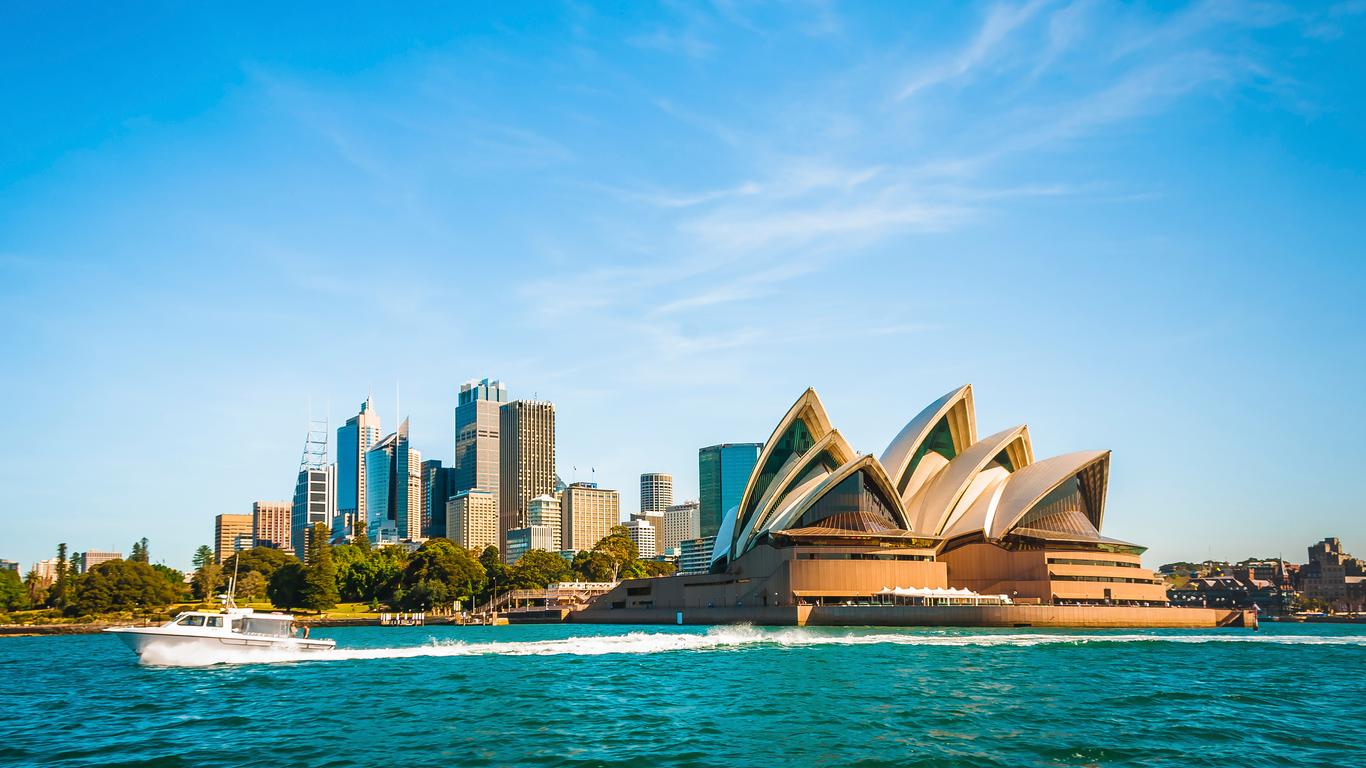
Find cheap flights from Japan to Australia from $276
This is the cheapest one-way flight price found by a kayak user in the last 72 hours by searching for a flight from japan to australia departing on 20/5. fares are subject to change and may not be available on all flights or dates of travel. click the price to replicate the search for this deal., search hundreds of travel sites at once for deals on flights to australia.
Save 19% or more Compare multiple travel sites with one search.
Track prices Not ready to book? Create a price alert for when prices drop.
Free to use There are no hidden charges or fees.
Filter your deals Choose cabin class, free Wi-Fi and more.
Good to know
Faqs for booking flights from japan to australia, how does kayak find such low prices on flights from japan to australia.
KAYAK is a travel search engine. That means we look across the web to find the best prices we can find for our users. With over 2 billion flight queries processed yearly, we are able to display a variety of prices and options on flights from Japan to Australia.
How does KAYAK's flight Price Forecast tool help me choose the right time to buy my flight ticket from Japan to Australia?
KAYAK’s flight Price Forecast tool uses historical data to determine whether the price for a flight to Australia from Japan is likely to change within 7 days, so travelers know whether to wait or book now.
What is the Hacker Fare option on flights from Japan to Australia?
Hacker Fares allow you to combine one-way tickets in order to save you money over a traditional return ticket. You could then fly to Australia with an airline and back to Japan with another airline.
What is KAYAK's "flexible dates" feature and why should I care when looking for a flight from Japan to Australia?
Sometimes travel dates aren't set in stone. If your preferred travel dates have some wiggle room, flexible dates will show you all the options when flying to Australia from Japan up to 3 days before/after your preferred dates. You can then pick the flights that suit you best.
Top 5 airlines serving from Japan to Australia
I booked a ANA flight, this was just a regular United flight — as always very bad, dirty, rude service, quite frankly really embarrassing to be flying with this after spending time in Japan.
Staff and crew are wonderful, professional and courteous. Meal is delicious and snacks can be improved. Entertainment needs improvement, pls update selections of movies. I appreciate that our flight was on time
I flew economy class so of course it’s not as roomy as business and first class. But overall it was ok and the seat had an interesting way to recline — the seat itself extended forward instead of the backrest. This way the person sitting behind me would not lose space by my reclining—excellent concept. I wish all airlines used these seats.
Flying with ANA is always a breeze. Seats are very comfortable.
For the price of a seat that is obviously crammed together so as to get many more people onboard and combined with the long flight duration, Free WiFi should be an automatic “Thank You for Flying with Us!” To charge an additional fee when so many other businesses offers it is a bit “cheap” on the airline’s part.
Flight was on time and the crew was as expected, friendly and respectful. Food could’ve been better though.
Food was high quality. Crew was extremely professional, polite, attentive. Flights were on time. Plane had good media tech.
I wish the serve should leach and drink. Maybe because only 2hr
Lovely airport at Haneda. Great food selection. Spacious and private boarding area with dedicated bathroom for each gate.
They did not get my request for veg food that i made a month ago. Also did not have any backup veg food on board or fruit plate or simething. Very disappointing as i had hward about how grwat ANA was supossed to be. Alsio entertainment was lacking and screen and tech was subpar. Overall just mid to low tie. They are living off reputation and are being passed up by most other carriers.
Great service but food taste and options have gone down a few notches.
This airlines is always my favorite. Very consistent customer service and food is good. My last flight with them, I had no idea we landed because it was just that smooth of a land.
Excellent crew, immediate attention for any request. Both ways on time (rather before time arrival at Haneda). Only complaint was that the seats are not reclining like rest of the airlines that I travelled. The Backrest is fixed. The reclining is only within the box seat, so you slide down forward for reclining, not backward. So it was bit uncomfortable. The food for the day trip was excellent. For the night flight, no breakfast was served, only dinner, which was disappointing.
At least it was not very cold inside the plane. I noticed there was now a bidet in the bathroom and that’s good! I didn’t like the window seat. Flight was smooth except for 1 turbulence. Plane was on time. Thanks. Food was not that great. Miso and green tea were good! As usual movies were old and there were no changes.
Food as always. PA was not clear, especially the English ones. Very limited Hollywood movies. Unlike the first flight I had, this plane has less leg room and less room for my under seat baggage.
Please change menu every now & then bc I fly twice within the year and serving the food the same
The Experience was fantastic, it's a quick flight so no entertainment or food. Just a refreshment
Great crew, Japanese domestic flight is just a drink service but crew are very attentive
First of all I had dozed off. And when I woke up, my food was on a tray without telling me the food was there or asking me if I wanted something to drink. They never came back to ask me if I wanted anything to drink and I tried to stop them several times. I personally have a problem swallowing food without something to drink with it. so therefore I could not eat., second thing for the entertainment. There was no place to plug the headset in because the tip had been broken off into the monitor to where you couldn’t even watch a movie or hear any music that was annoying .
JAL is a flawless airlines. Perfect customer service. On-time boarding, clean airlines, and incomparable in-flight dining.
The international flight from Sydney to Dallas had great food. I have travelled a lot over the years and this has been the most memorable in my experience so far.
flight delayed, wait in crowded gate. staff inattentive. had to remind them to get my coat from their closet. not many new movies, media choices were limited (nothing compared to Emirates.) Lounge was crowded
flight delayed, wait in crowded gate. staff inattentive. had to remind them to get my coat from their closet. not many new movies, media choices were limited (nothing compared to Emirates.)
Initial flight was cancelled so moved to an alternative flight. As a result, stuck in a middle seat. Flight then place in holding pattern prior to landing resulting in a very late trip home.
There was nothing I didn’t like, prices a little lower would help
Flight delay was informed at the last minute. Food quality is not up to Qantas standard I was unable to book an online boarding pass on any of my 6 flights.
Following a marathon flight riddled by delays and changes from Santiago, Chile, my flight to Melbourne from Sydney was on schedule but I was transferred to the next flight. The reason by ticketing and the floor manager was I missed the entry to flight by one minute! That's right, the emphasised that if I was 1 minute earlier I would be on the flight. I asked what was the point them emphasising 1minute overdue and how that helped me or the situation. They didn't care at all. Replying that if it was one minute earlier they would've done something and smirking delivering the information. Australian's do call Australia home, Qantas calls Australian's suckers.
Rescheduled after ticket purchased and issued, not 2 or 3 times and not a fourth but by 5 times, by Qantas, that's right, 5 changes! Forcing an overnight stay in Chile and need for visa. Qantas can no longer provide basic services as a national or international service provider. Professionalism is extinct and the provider needs to be mentored and educated in perfecting who to operate as an airline. Qantas is the spirit of Australian dissatisfaction.
Amazing! Was put on the earlier flight and I requested for an aisle seat and was given it. Thanks Qantas!
The staff we fantastic and seemed to work very well with each other
a constant reminder that you need to work harder so you can avoid this airline
For some reason the cabin was kept very cold. Unlike my flight over which i would say was excellent this was a long, cold flight home.
Note that food has to be purchased in flight. No free food. And no entertainment in flight. So I’ve treated these two items as okay which, in this case, means neutral/not applicable.
My Dad needed assistance to board the plane. The Jetstar staff were excellent with him and made the experience a lot easier😁
No food taken so can't rate also no entertainment so can't rate.
Boarding was easy and unstressful, though the early "final call" was a bit off-putting. The crew were pleasant, and the seats were comfortable. The prices for food and drink were reasonable, apart from tea and coffee, where simple percolated coffee was charged at espresso prices. Deboarding was OK, though some Jetstar passengers appear to have a bad habit of pushing forward from their assigned rows, making it more difficult to get out for passengers that have paid a premium to sit up-front. Jetstar might want to look to address this to stop it from spreading.
I got to the airport earlier than I expected, and they let me change to an earlier flight with no trouble.
The price difference/saving isn't sufficient to compensate the experience difference, don't recommend unless flight is under 3 hours. Huge queues for check in and the priority lane of other ailines blocked checked in Jetstar passengers from proceeding through to screening. Gate change to a "dungeon gate" that didn't have toilets in the vicinity. 45minute delay in boarding, no updates or explaination, let alone apology for any inconvenience. 1 scanner working for a full fight to board, no coordination. Loaded on to crowded buses to get on the plane in the middle of the tarmac, up stairs with no explaination. 4 bus trips. No system for boarding in sections. Over an hour late departing. Nothing complimentary, not even water or in-flight music. Pay wave not available and no cash sales. Staff onboard were friendly and professional.
Flight was delayed by 1 hour, we board then had to sit on the tarmac for another hour before take off. The flight was fine but again another delay with the baggage which took another hour to appear on the carousel.
It was a super crowded time to travel out of Melbourne, but the flight was OK
WiFi didn’t work on both sectors so made killing time harder - planes clean modern and good flight crew - would do again if WiFi works
6hrs fly they dont give you a glass of water from seoul to singapore need to buy drink and food plus they charge for bag on international fly is always Free 1 bag from seoul to singapore is Not a local fly you are traveling true asia same story from singapore to Bali no water drink after payment for bag drink cost more the regular airline Well never use this company again we use regular company like Delta korea japan China and even scoot parent company Singapore Air
We had 2 attempts to land at Singapore Changing during a thunderstorm. Everything was delayed by 1 hour plus.
Boarding was not accordingly after front seat, bmf then back seat. This delayed for at least 40mins or more. The staff at Jakarta can do better. Is chaos at the entry to board the plane. This tarnished Scoot reputation when everyone was talking about it.
The crew was not customer oriented at all, even confrontational . The aircraft needs more attention to detail as far as comfort, and the 1 hour sitting at the gate with no air is inexcusable
We flew on the 787 Dreamliner direct to main gate at KLIA2, quick entry via eGate and on the train 41mins after touchdown. Go well SCOOT
Was on scoot plus. The only good thing about the flight was the spacious seats. Tables and armrests were extremely dirty Food: bad Entertainment: non existent Wifi: unable to connect, then was painfully slow that we couldn’t even send messages Good thing we had a night flight, so we just slept throughout.
Not clear why boarding passes could only be issued at the counter and not through the kiosk. I had already check-in on the web, so waiting to obtain a boarding pass 1.5 hours before the actual flight defeats the purpose of early web check-in.
no charging point. food offering is limited and very much on the budget line. Overall is not satisfying for such a price and duration of flight.
We were delayed, but there was never any update given. Everyone was standing at the gate as boarding was supposed to commence at 13:10 for a 13:55 flight. We didn't actually start getting on the shuttles to the plane, until after 14:00. No updates, no information given at all.
Book cheap flights from Japan to Australia
Recent return flight deals, search by stops, search by airline, search by price, recent one-way flight deals, last minute flights to australia, last minute flight, train and bus deals, flights to australia, return flight deals:.
Australia - Japan
Cabin classes:
Browse origins:.
- Flights »
- Worldwide »
Browse destinations:
- Travel Planning Guide
A Travel Comparison for Vacations, Honeymoons, and Tours Australia vs. Japan
Should you visit australia or japan, which country is cheaper, japan or australia.
Should I visit Australia or Japan? This is a popular question for many travelers. By figuring out which country is more expensive, you'll understand where you'll get more bang for your buck. A week in Japan can cost you about $0.00 (per person), while a week in Australia may cost you around $1,154. These differences become even more noticable if you plan to spend a longer time in the country. 10 days , two weeks , or even one month of travel to Japan or Australia can really add to your travel budget.
Accommodation is often cheaper in Japan compared to Australia ($0.00 vs. $71). Budget travelers usually stay in less expensive hostels and guest houses, while nicer hotels often appeal to families and upscale travelers.
Compare hotel prices here: Australia Hotel Prices and Japan Hotel Prices .
Or, compare hostel and guesthouse prices between Japan and Australia to find the cheapest accommodation here: Japan hostels and Australia hostels .
When comparing food in Australia vs. Japan they are not just different in cuisine, but also in price. Meal and restaurant costs in Australia ($35) are often cheaper than Japan ($0.00).
- Australia Prices Japan Prices
- Average Daily Cost Per person, per day Australia $ 165 Japan $ 0.00
- Accommodation Hotel or hostel for one person Australia $ 71 Japan $ 0.00
- Accommodation Typical double-occupancy room Australia $ 142 Japan $ 0.00
- Local Transportation Taxis, local buses, subway, etc. Australia $ 31 Japan $ 0.00
- Food Meals for one day Australia $ 35 Japan $ 0.00
- Entertainment Entrance tickets, shows, etc. Australia $ 31 Japan $ 0.00
- Alcohol Drinks for one day Australia $ 15 Japan $ 0.00
- Water Bottled water for one day Australia $ 3.64 Japan $ 0.00
How much are flights to Australia and Japan?
The price of a plane ticket may help you decide which country you should visit.
Find a Hostel in Australia or Japan
Hostels, guest houses, and locally owned B&B's are often the cheapest form of accommodation.
Related Articles for Australia
Related articles for japan, when is the best time to visit australia and japan.

Why is Australia more expensive than Japan?
What are the most expensive and cheapest cities and regions in australia and japan.
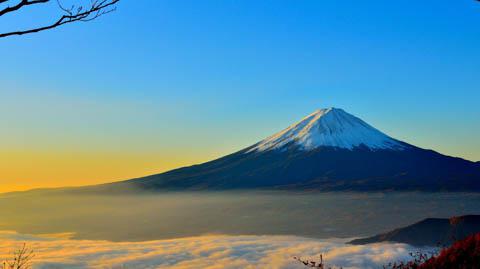
How you can save money when visiting Australia and Japan?
Subscribe to our newsletter.
By signing up for our email newsletter, you will receive occasional updates from us with sales and discounts from major travel companies , plus tips and advice from experienced budget travelers!

More Country Comparisons
For australia, pin this page.

- Privacy / Terms of Use
- Activities, Day Trips, Things To Do, and Excursions

The distance from the middle of Japan to the middle of Australia is:
4,345 miles / 6 993 km flying, map of distance from japan to australia, more trip calculations.
- Reverse Distance
- Flight Time
- Airports in Australia
- airlines flying to Australia
- Nonstop Flights
- Time Difference
Distance from Japan to Australia
The total straight line flight distance from Japan to Australia is 4,345 miles .
This is equivalent to 6 993 kilometers or 3,776 nautical miles .
Your trip begins in Japan. It ends in Australia.
Your flight direction from Japan to Australia is South (-175 degrees from North).
The distance calculator helps you figure out how far it is to get from Japan to Australia. It does this by computing the straight line flying distance ("as the crow flies") and the driving distance if the route is drivable. It uses all this data to compute the total travel mileage.
related links
- airports in Japan
- cities in Japan
- airports in Australia
- cities in Australia
Distance calculator
Travelmath helps you find distances based on actual road trip directions, or the straight line flight distance. You can get the distance between cities, airports, states, countries, or zip codes to figure out the best route to travel to your destination. Compare the results to the straight line distance to determine whether it's better to drive or fly. The database uses the latitude and longitude of each location to calculate distance using the great circle distance formula. The calculation is done using the Vincenty algorithm and the WGS84 ellipsoid model of the Earth, which is the same one used by most GPS receivers. This gives you the flying distance "as the crow flies." Find your flight distances quickly to estimate the number of frequent flyer miles you'll accumulate. Or ask how far is it between cities to solve your homework problems. You can lookup U.S. cities, or expand your search to get the world distance for international trips. You can also print out pages with a travel map.
Home · About · Terms · Privacy


Can Australians Travel to Japan?
Yes! Australians can travel to Japan. With its stunning landscapes, unique culture and fascinating attractions, it’s no wonder that so many people are interested in visiting this beautiful country. Whether you’re looking for a peaceful getaway or an exciting adventure, Japan has something to offer everyone. Before you pack your bags though, there are some things you need to know about traveling to Japan as an Australian citizen. This blog post will provide all the information you need about visa requirements, where to stay, what to do and more – ensuring your trip is one of the best experiences of your life! To start off with the basics: before travelling from Australia to Japan as a tourist (for up to 90 days), Australians must obtain a valid visitor visa from their local Japanese embassy before entering the country. The application process varies depending on whether it’s done online or at an embassy in person – but either way should be relatively straightforward and hassle-free if all documents are in order.
What Japan Thinks of Australians
When will japan lift travel ban, when will japan open borders again, japan travel restrictions 2022, japan travel restrictions, can i travel to japan, can i travel from australia to japan now, is japan open for aussies, when can australians travel to japan again, does japan let australians in.
Yes, Australians are able to travel to Japan! This beautiful country is a popular destination for tourists from all over the world – and Australia is no exception. In order to travel to Japan, however, it’s important that you know the right steps and requirements before you go. Firstly, Australians need a valid passport in order to enter Japan. It must be valid for at least three months after your intended date of departure from Japan. You will also need an Australian visa or residence permit if you intend on staying longer than 90 days. This can be applied for online through the Japanese Ministry of Foreign Affairs website or by visiting their embassy in Canberra. Once those documents have been secured and approved, it’s time to purchase flights and book accommodation in advance! There are many direct flights from Australia into Tokyo which make travelling hassle-free when combined with other forms of transport such as train or bus services throughout the country once you arrive in Japan. It’s also important that travellers keep up-to-date with any potential changes due to COVID-19 restrictions both within Australia and Japan before they decide on travelling there – this includes ensuring necessary vaccinations are up-to-date prior departure as well as being aware of new arrival policies upon entry into the country (e.g., testing/quarantine etc).
The Novel Coronavirus pandemic has caused several countries to put in place drastic travel bans and restrictions. Japan, like many other nations, had banned foreign tourists from entering the country since April 2020. This ban was imposed to prevent the spread of COVID-19 in the nation and it is still in place as of March 2021. However, Japan is now taking steps towards lifting this travel ban for certain categories of people. In late February 2021, Japanese Prime Minister Yoshihide Suga announced that he would be extending a special exemption on entry for business travelers from China and South Korea who are visiting Japan with a valid visa by mid-March. This exemption will allow these two groups to enter into Japan without having to quarantine upon arrival or provide proof of pre-travel PCR test results/COVID-19 vaccination certificates. Beyond this initial step taken towards easing restrictions, there has been no indication that further changes will be made anytime soon regarding international travel for leisure purposes or visitors coming from other countries outside of China and South Korea. The government does not have any definite timeline on when they plan to lift the current travel restriction completely either but it looks like we may see more gradual adjustments being made over time as the situation evolves within each region across Asia Pacific area.
The COVID-19 pandemic has caused chaos around the world, and Japan is no exception. As a result of this global health crisis, Japan’s borders have been closed to travelers since early April 2020 in order to prevent further spread of the virus. This has had a huge impact on tourism in Japan, as well as foreign workers who were employed there before the pandemic began. At present, Japanese authorities are not providing any specific dates for when they will reopen their borders again. However, they are taking steps to slowly ease travel restrictions within their own country and allowing people from certain countries (like China and South Korea) to visit under special conditions. There is also talk of loosening visa requirements for some long-term residents of Japan who had left during the pandemic but would like to return now that it appears more stable there. In terms of international visitors coming into Japan from other countries however, it’s unlikely that we’ll see those restrictions lifted anytime soon. In fact, Prime Minister Shinzo Abe recently stated that he does not plan on lifting border control measures until at least late 2021 or even 2022 due to concerns about new variants emerging from overseas locations which may be more resistant than current strains against vaccines being administered in Japan right now.
The world is slowly reopening after the pandemic, but Japan has remained closed off to most international travelers. In 2021, the country began allowing some foreign visitors in on an extremely limited basis. However, it looks like those same restrictions will be in place for much of 2022 as well. Currently, Japan is only permitting entry to citizens or residents from a few select countries: Australia, New Zealand, Singapore and Thailand (as of early 2021). All other nationals are barred from entering and must obtain special permission if they wish to do so. To make matters worse, even when someone does manage to get approval for travel into Japan they must also prove that their trip was “absolutely necessary” before being allowed entry. For people who have already obtained permission but haven’t been able to enter yet due to COVID-19 related delays or visa issues can now apply for what’s called a “re-entry permit”. This allows them stay valid until March 31st 2022 – though you need to reapply every three months if your stay extends beyond this date. In terms of quarantine policies upon arrival in Japan; anyone coming from overseas needs provide proof of their negative PCR test taken within 72 hours prior departure and submit documents outlining the details of their itinerary (including accommodation information) as well as plans for self-isolation/quarantine upon arrival in the country via an online form provided by the Japanese government website .
If you’ve been dreaming of a trip to Japan, you should know that the country has implemented travel restrictions due to the global pandemic. As of now, entry into the country is limited and travelers must meet certain requirements in order to be admitted. Here we will provide an overview of what those restrictions entail so that you can plan your visit accordingly. First and foremost, all international visitors are required to present a negative test result for COVID-19 taken within 72 hours prior to their departure date when entering Japan. This rule applies even if they have been vaccinated against this virus previously or if they are coming from countries with lower infection rates like Australia and New Zealand. Additionally, travelers must also fill out an online questionnaire before boarding their flight which includes information about their health condition as well as any contact with infected individuals in recent weeks. All foreigners who enter Japan are subject to another two week quarantine upon arrival at designated locations such as hotels or other types of lodging; however exemptions may be granted for business trips under certain conditions (e.g., frequent testing). In addition, airports have set up dedicated lanes for passengers traveling on official business trips so that they can pass through more quickly without having to wait in line with other visitors entering Japan who don’t fall into this category.
If you’re wondering if it’s possible to travel to Japan, the answer is yes! As one of the most popular international tourist destinations in the world, Japan welcomes millions of visitors from all around the globe each year. Whether you’re looking for ancient culture and traditions or modern cityscapes, there is something here for everyone. When travelling to Japan, make sure that your passport has at least six months validity remaining prior to arrival. You will also need a valid visa depending on your nationality and purpose of visit. Generally speaking, citizens of many countries are eligible for a 90-day tourist visa upon arrival which can be extended up to 180 days by applying through an immigration office after entering the country. If you plan on staying longer than this or engaging in activities such as work or study while in Japan then alternative visas may be necessary and should be applied for before departure from your home country. Depending on where you live, direct flights are available from various cities across Europe and North America but flights from other parts of the world usually involve multiple stopovers resulting in increased travel time as well as cost so it pays off to do some research when planning your trip ahead of time.

Credit: www.traveller.com.au
Travel from Australia to Japan is currently possible, but restrictions and conditions apply due to the ongoing COVID-19 pandemic. The Australian government has imposed strict travel restrictions for Australians travelling overseas. This includes a ban on all non-essential travel abroad until further notice. However, if you do want to travel from Australia to Japan, there are some steps that must be taken in order to do so safely and legally. Firstly, it’s important to check whether your destination country has any entry requirements or other health protocols in place as a result of the global pandemic. In Japan specifically, travellers are required by law to present proof of a negative polymerase chain reaction (PCR) test upon arrival at their port of entry. This test must have been conducted within 72 hours prior your departure date; otherwise entry may not be granted into the country. Additionally, all travellers will need complete an online registration form before entering Japan which will require personal details such as passport number and address in Japan during stay duration time etc . Other information regarding this form can be found on the official website for Japanese immigration services – https://www.immi-moj.gojp/en/.
Japan is a popular holiday destination for Australians, and the answer to whether Japan is open for Aussies right now depends on your purpose of travel. Since April 2021, Australia has been included in Japan’s list of ‘Low Risk Countries’, which means Australian citizens are able to enter the country with fewer restrictions than other countries. However, it’s important to note that there are still some measures in place for entry into the country due to Covid-19. For those travelling from Australia who wish to enter Japan for tourism purposes, you must be able to prove that your stay will not exceed 90 days and have proof of a negative PCR test taken within 72 hours prior departure from Australia. You must also submit an Online Certificate of Entry (COE) when entering Japan by air or ship. This COE application must be approved by Japanese authorities before arrival; if it isn’t approved then you won’t be allowed entry into the country. If you plan on visiting family or friends while in Japan then there may be additional requirements such as quarantine upon arrival and providing evidence that shows why you need to visit them (e.g., birth/marriage certificates). It’s also important to keep up-to-date with what type of visas are available during this time as they can change regularly due to international events or domestic policies enforced by either side’s government(s).
The news of Japan reopening its doors for international visitors is an exciting development for many Australians who are eager to visit the Land of the Rising Sun. But when exactly can we travel to Japan again? At present, Australia and other countries are still under travel restrictions imposed by the Japanese government due to the COVID-19 pandemic. This means that nonessential foreign travellers (including those from Australia) cannot enter Japan until further notice. However, there have been some positive developments in recent weeks which could signal a change in this situation soon. In April 2021, Japan began allowing certain business travelers and high-skilled professionals from overseas countries into the country on special visas granted by Japanese immigration authorities. These visas allow eligible applicants to stay in Japan up to 12 months and work during their stay as long as they meet certain criteria set out by the government. There have also been discussions about possibly allowing tourists back into Japan sometime this summer if public health conditions improve significantly over time. The Japanese Prime Minister Yoshihide Suga has indicated his support for such measures but no official decision has been made yet on when these changes will come into effect precisely or what kind of restrictions might be put in place for incoming travellers from abroad.
Australia and Japan have a strong relationship, with many Australians travelling to Japan each year. The Japanese government allows Australian citizens to visit the country as tourists without needing to obtain a visa in advance. In order for an Australian citizen to enter Japan, they must present their passport at the port of entry, along with other documents such as proof of sufficient funds for the duration of their stay and evidence that they intend to leave within 90 days or less. While Australians are generally welcome in Japan and can travel freely for tourism purposes, there are some restrictions on foreigners working in the country. Australia-Japan Working Holiday Visa Program is designed for people aged 18-30 from both countries who wish to spend up 12 months living and working abroad. To apply for this visa you will need evidence showing your intention to return home after completing your holiday; proof of health insurance covering medical costs; valid passport; bank statement proving financial security during stay; two recent passport photos; written guarantor’s agreement signed by parent/guardian if under 20 years old etc. There are also several other types of visas available including student visas which allow those enrolled at an approved institution in Japan (including universities) to remain longer than 90 days while studying there.
Yes, Australians can travel to Japan! The Japanese government has recently announced that visitors from Australia and New Zealand are now eligible for a 3-month visa waiver program. This means you don’t need to apply for a visa in advance – all you have to do is present your passport and other documents at the airport when you arrive in Japan. You’ll need proof of onward travel plans and evidence of sufficient funds, however entry is otherwise granted on arrival. It’s important to note that this waiver only applies if you stay in Japan less than 90 days. If your stay exceeds 90 days or if your purpose of visit is work or study related then a normal visa application will be required. Additionally, due to the ongoing global pandemic situation it’s also recommended that travellers check local health guidelines before travelling as well as any relevant advisories issued by their home countries’ foreign ministries about international travel restrictions. Overall, though, it’s great news for Australians who may want to take advantage of some cheap flights and explore what Japan has to offer!
Izumi Kenta
Hi, I’m Izumi Kenta from Japan. By profession, I worked as a tourist guide and interpreter in Japan. Besides this profession, I’m a hobbyist blogger. I love to talk about different things about Japan and share them with a wider audience who wants to know about my country. To share my thoughts, I’ve created this site Visitjapan and brought some Japanese travel enthusiasts and tourists worldwide to share their experiences.
Leave a Reply Cancel reply
Your email address will not be published. Required fields are marked *
Save my name and email in this browser for the next time I comment.
Recent Posts
Why Does Japan Have So Many Earthquakes? Discovering the Secrets Behind Japan's Seismic Activity
Japan is a country that is known for its frequent earthquakes. The question of why Japan experiences so many earthquakes has intrigued scientists and researchers for years. In this article, we will...
Unlocking the Secrets: Kobe Beef Price per kg Revealed!
Unlocking the Secrets: Kobe Beef Price per kg Revealed! Understanding the Factors Affecting Kobe Beef Price per kg Kobe beef, renowned for its exceptional quality and flavor, is a delicacy that...


Our Organisation

Our Careers

Tourism Statistics

Industry Resources

Media Resources

Travel Trade Hub

News Stories

Newsletters

Industry Events

Business Events

Japan & South Korea
Tourism Australia’s activities in Japan and South Korea are managed from offices in Tokyo and Seoul.
Link Copied!
South Korea

Japan Market Performance

OUT OF REGION TRAVELLER

Working in Market

Aviation statistics

Future of Demand Japan
Discover the tourism experiences in greatest demand with this market snapshot for japan., south korea market performance.

Future of Demand South Korea
Discover the tourism experiences in greatest demand with this market snapshot for south korea..

Subscribe to our Industry newsletter
Tourism australia produces a range of industry, media and special interest newsletters. keep up to date and subscribe to the newsletters you would like to receive via email., market insight snapshots.

We use cookies on this site to enhance your user experience. Find out more .
By clicking any link on this page you are giving your consent for us to set cookies.
Acknowledgement of Country

We acknowledge the Traditional Aboriginal and Torres Strait Islander Owners of the land, sea and waters of the Australian continent, and recognise their custodianship of culture and Country for over 60,000 years.
*Disclaimer: The information on this website is presented in good faith and on the basis that Tourism Australia, nor their agents or employees, are liable (whether by reason of error, omission, negligence, lack of care or otherwise) to any person for any damage or loss whatsoever which has occurred or may occur in relation to that person taking or not taking (as the case may be) action in respect of any statement, information or advice given in this website. Tourism Australia wishes to advise people of Aboriginal and Torres Strait Islander descent that this website may contain images of persons now deceased.

Japan blocks overcrowded selfie spot, bans tourists from traditional areas to cope with explosion of travellers
After fears that tourist numbers would never return to pre-pandemic levels, it may now be a case of too much of a good thing for Japan.
A combination of a weak yen, more affordable airfares, the relaxation of coronavirus restrictions and "revenge travel" has led to monthly visitors to Japan hitting a record high.
Over-tourism is now such a problem for one Japanese town it has erected a barrier to block snow-capped views of Mount Fuji, after locals complained about the bad behaviour of selfie-seeking visitors.
So, what measures have been implemented to curb over-tourism?
How is Japan handling over-tourism?
Over-tourism happens when so many visitors are attracted to an area that life becomes unpleasant for the locals, despite any economic or other ostensible benefits.
One of Japan's busiest tourist periods of the year ended on Monday.
Golden Week — which ran from April 27 to May 5 — coincided with multiple public holidays and near-perfect spring weather.
To help deal with all the international tourists in the country during one of Japan's busiest periods, authorities have tried a range of measures.
In Kamakura, a popular temple city, English-speaking guides have been helping to direct tourists to stop them obstructing busy train stations, according to Nikkei.
Kyoto's traditional neighbourhood, Gion, recently banned visitors from its small private alleys.
Locals had complained of snap-happy tourists harassing the city's immaculately attired geisha, who had to remind them it was "not a theme park".
Authorities in Kyoto have also reportedly installed screens at the main train station showing live feeds of tourist areas so visitors can assess crowds and plan their trips better.
Many people visit the small, scenic Japanese town of Fujikawaguchiko in Yamanashi Prefecture, causing chaos on local streets while trying to photograph Mount Fuji.
Authorities said they had had enough of the excessive number of foreigners littering, ignoring traffic regulations and even climbing on roofs of office buildings in search of the perfect selfie spot.
Exasperated town officials eventually blocked the view of Mount Fuji with a 2.5-metre-high black barrier.
"It's regrettable we have to do this because of some tourists who can't respect rules," a town official said.
Hikers using the most popular route to climb Mount Fuji, where the climbing season begins in July, will be charged 2,000 yen ($19.50).
Numbers will be capped.
Where are Japan's visitors from?
The January earthquake in the western prefecture of Ishikawa had minimal impact on 2024 arrivals, according to the Japan National Tourism Organisation (JNTO).
Tourist numbers have quickly rebounded, and apart from Australia, Japan has had a large influx of visitors from South Korea, Taiwan and Hong Kong.
Street Kart, which offers rides for tourists in Tokyo, Okinawa and Osaka, said most were from Australia, the US, Canada and the UK — with decent numbers from Europe and Asia.
"The demand for our activity has risen significantly [this year] in conjunction with the increase of visitors to Japan," Street Kart spokesperson Mai Ishido told the ABC.
However, tourism from China has stayed well below pre-pandemic levels.
The JNTO said visitors from China, which had made up nearly a third of all visitors and 40 per cent of tourist spending, were slowly returning.
The April numbers aren't out yet, but in March, visitors to Japan hit a record high of 3.08 million visitors, according to the JNTO.
The previous record of 2.99 million was set in July 2019 during a year that Japan welcomed a record 31.9 million visitors.
It's a stark contrast from the early days of the pandemic, when Tokyo banned spectators from the postponed Olympics in 2021 .
Tourists have been making the most of Japan's weak yen, which fell to a three-decade low against the US dollar last month.
Even Australia's faltering currency still has buying power in Japan, with one dollar converting to almost 102 yen, up more than 10 per cent from a year ago.
A hearty dinner on Tokyo's famous Ramen Street will set you back around 1,080 yen ($10.55) while a bus ride in Kyoto costs 230 yen ($2.25) — both cheaper than Australia's capital cities.
What have other countries done?
Over-tourism has also affected other popular Asian destinations, like Bali and Thailand, with international travel returning to normal after the pandemic.
A new $15 tourism tax was introduced to Bail in February, after a series of incidents involving visitors desecrating holy sites and behaving badly.
In Thailand's Maya Bay, which was made famous by The Beach, starring Leonardo DiCaprio, a maximum of 375 visitors are allowed at one time.
Even though access had earlier been restricted and it was later closed for three years, an estimated 80 per cent of the coral reefs there died due to over-tourism.
While there are plenty of plans to restrict and control tourist numbers, not everyone in Japan is sick of all the foreign visitors.
Ms Ishido from Street Kart said there was no such thing as having too many tourists and that everyone was welcome.
"We hope to see many more happy smiling faces coming to and from our shops," spokeswoman Ms Ishido told the ABC.
- X (formerly Twitter)
Related Stories
Four years after covid shuttered borders, millions of international tourists are nowhere to be seen.
The surprise group of people driving a resurgence of the cruise industry
'Egregious and unacceptable': Qantas agrees to $120 million settlement for selling tickets on cancelled flights
Fed up with badly behaved tourists and obnoxious influencers, Bali has a new tax and a new list of rules
- Air Transport Industry
- Government and Politics
- Human Interest
- Lifestyle and Leisure
- Tourism and Leisure Industry
- Travel and Tourism (Lifestyle and Leisure)
- World Politics
- International edition
- Australia edition
- Europe edition

‘It’s very unfair’: Australia’s visa crackdown is disrupting international students and hitting university finances
Student applications and net arrivals fall as refusal rates reach a record high. The situation is set to worsen if visa fees are hiked in the upcoming budget
- Get our morning and afternoon news emails , free app or daily news podcast
It took Rajesh more than 12 months to receive his visa to study in Australia.
But Rajesh – not his real name – considers himself lucky. Two of his friends who also come from India have recently had their PhD offers expire after waiting for visas for more than 10 months.
“It’s frustrating … especially considering PhD students are crucially important,” says Rajesh, who comes from the Indian state of Uttar Pradesh, considered a red flag by universities trying to weed out non-genuine applicants. “They are fully funded and highly skilled individuals who contribute significantly to our academic community.”
As part of a bid to halve net migration by 2025 , the Australian government is cracking down on non-genuine students who use student visas as a back door for work and permanent residency. The federal government has announced a series of reforms, including tougher visa conditions, stronger English-language tests and rules for education agents who bring overseas students to Australia.
The latest home affairs data shows the proportion of offshore student visa applications being refused has reached a record high, with as many as one in five students having their visas rejected in the year to March. Visas granted to Indian students fell by 48% between December 2022 and December 2023, with Nepalese visas granted falling 53% and Pakistani visas falling 55% over the same period.
The department cites an increase in incomplete applications and fraudulent documentation, contributing to both higher visa refusal rates and longer processing times. The tougher visa conditions have prompted institutions to change their policies, with some even imposing blanket bans on Indian students.
Sign up for Guardian Australia’s free morning and afternoon email newsletters for your daily news roundup
The home affairs minister, Clare O’Neil, says the federal government recognises “change is hard” but migration is “too high” and must be brought back to “sustainable levels”.
“We are working with the sector to help providers adapt, but we must restore integrity to the system to protect the sector’s international reputation,” she says.
But some say the approach is having a financial impact on institutions and disrupting the plans of genuine students who may be turned off studying in Australia altogether.
What’s going on?
The founder and president of the Pakistani Students Association of Australia, Zeeshan Malik, says many offshore students are experiencing visa refusals , while others are scared to travel back home lest their visas be cancelled on return to Australia.
While there have not been any reported cases of students having their visas cancelled on return, Malik says students feel they are being discriminated against based upon their country of origin.
“It’s very unfair,” he says. “Lots of students are struggling with mental health and other issues because of these confusing policies.”
A University of Sydney spokesperson says a “significant number” of students have been forced to defer or withdraw their applications due to visa processing delays, while others have been suspended to fulfil additional requirements.
“This has been very disruptive to highly capable young people from around the world who had paid their visa application fee and chosen to come to Australia for their studies,” the spokesperson says.
“We have moved our last date to apply for semester 2 to try to limit any such impact for future students.”

The University of Melbourne has also “faced challenges” this semester, with a number of students yet to receive their visas for the 2024 intake. A spokesperson says it has provided an extension to allow enrolled international students to start later.
Central Queensland University has gone even further, writing to education agents confirming it will no longer offer English language programs to students from India or Nepal, or enrolments to applicants over 25 or married, except for research placements.
“With many universities witnessing an increase in student visa refusals, it has been necessary for CQUniversity to proactively reconsider admissions requirements on a regular basis,” a spokesperson says.
“We have a moral obligation to ensure that prospective students have the best opportunity to successfully obtain a student visa.
“Such an outcome is not good for the student, the university, or the reputation of Australia as a global study destination.”
Why universities are imposing blanket bans
Phil Honeywood, the chief executive of the International Education Association of Australia (IEAA), says stigmatising entire nations is a “blunt instrument” that ignores the benefits of diversity.
“We’re supposed to be a welcoming, safe nation,” he says. “It’s a shame sometimes blunt policy instruments go against other government policies.”
Honeywood says universities are imposing restrictive measures on international students in the hope it will improve their risk ratings, which are used by the federal government to reduce student numbers.
The system assesses universities based upon how likely they are to recruit non-genuine students who arrive in Australia primarily to work, not study. Visas are given a risk rating between 1 and 3, and only low-risk universities on level 1 have visa applications processed quickly.
after newsletter promotion
Earlier this month, the list was updated, with nine universities downgraded to a level 2 and two downgraded to a level 3.
According to Honeywood, less than 10% of international student visas are waiting to be approved at low-risk universities while universities at level 2 and 3 are facing extensive delays.
During a webinar hosted by the IEAA at the beginning of the university year, Charles Sturt University’s pro-chancellor, international, Mike Ferguson, said 40% of international students enrolled in his university – which is a level 2 – were still waiting on visa decisions in the first week of the semester.
“Speaking to my colleagues at other universities, I know many others are in similar situations,” he says.
“You’re looking at refusal rates for offshore students in most markets in the region of 50%.”

Level 3 institution Federation University has faced significant budget pressure since the migration crackdown. It recently announced plans to cut 200 ongoing positions – the equivalent of just over one in 10 staff members.
A spokesperson for the university said the announcement came in response to a 49% decline in international student numbers between 2019 and 2023, which had been exacerbated by “unexpected but necessary changes to international student visa arrangements”.
Similarly, the University of Tasmania – also at level 3 – announced last month it would sell two of its Hobart hotels intended to house international students in anticipation of declining numbers.
Private institutions have also been hit hard. According to English Australia, the national peak body for more than 100 English language colleges for international students, visa grants plummeted by 68% in December 2023 compared with the previous year.
What the future holds
The share of international students is likely to decrease further with an anticipated hike in student visa fees in the May budget, making Australia “well and truly” the most expensive country to apply for a non-refundable visa, according to Honeywood.
Honeywood says international students are facing a “blame game” as the only migration market to Australia that can feasibly be reduced.
The former immigration department deputy secretary Abul Rizvi agrees. He says while higher visa fees are likely, it will be “poor long-term policy”.
“It will mostly deter high-performing students who have options of going elsewhere,” he says. “Policy must be designed to encourage and reward providers to compete for the best students not just those who can apparently afford to pay.”
Rizvi says the cautious approach being taken by providers, coupled with the ramping up of refusal rates for offshore student applications, led to a big fall in student visa applications in February and a fall in net student arrivals in March.
“That trend will likely continue over the next few months,” he says. “But while the flow of students is slowing, the stock is still rising and is now well over a record 700,000,” he says, referring to the number of international students in Australia.
“The industry is built on continuous growth. Under the risk rating system, lower tier providers are particularly vulnerable. They are the ones complaining the most.”
To Rajesh, the decline in quality lies squarely with universities and the government.
“Students are not responsible for that,” he says. “Blaming everything on students and their respective countries is not solving the problem.”
- Australian education
- Australian universities
- Australian immigration and asylum
Most viewed
To fend off tourists, a town in Japan is building a big screen blocking the view of Mount Fuji
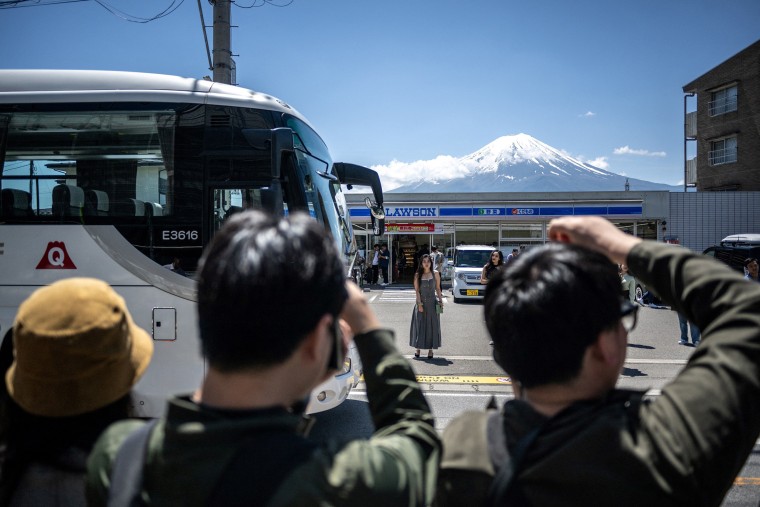
FUJIKAWAGUCHIKO, Japan — The town of Fujikawaguchiko has had enough of tourists.
Known for a number of scenic photo spots that offer a near-perfect shot of Japan ’s iconic Mount Fuji , the town on Tuesday began constructing a large black screen on a stretch of a sidewalk to block the view of the mountain. The reason: misbehaving foreign tourists.
“Kawaguchiko is a town built on tourism, and I welcome many visitors, and the town welcomes them too, but there are many things about their manners that are worrying,” said Michie Motomochi, owner of a cafe serving the Japanese sweets “ohagi,” near the soon-to-be-blocked photo spot.
Motomochi mentioned littering, crossing the road with busy traffic, ignoring traffic lights and trespassing on private property. She isn’t unhappy though — 80% of her customers are foreign visitors whose numbers have surged after a pandemic hiatus that kept Japan closed for about two years.
Her neighborhood suddenly became a popular spot about two years ago, apparently after a photo taken at a particular angle showing Mount Fuji in the background, as if sitting atop a local convenience store, became a social media sensation known as “Mt. Fuji Lawson,” town officials say.
The mostly foreign tourists have since crowded the small area, setting off a wave of concerns and complaints from residents about visitors blocking the narrow sidewalk, taking photos on the busy road or walking into neighbors’ properties, officials said.
In Europe, concerns over tourists overcrowding historic cities led Venice last week to launch a pilot program to charge day-trippers a 5-euro ($5.35) entry fee. Authorities hope it will discourage visitors from arriving on peak days and make the city more livable for its dwindling residents.
Fujikawaguchiko has tried other methods: signs urging visitors not to run into the road and to use the designated crosswalk in English, Chinese, Thai and Korean, and even hiring a security guard as crowd control. None worked.

The black mesh net, when completed in mid-May, will be more than 8 feet high and 65 feet long, and will almost completely block the view of Mount Fuji, officials said.
Dozens of tourists gathered Tuesday taking photos even though Mount Fuji was not in sight due to cloudy weather.
Anthony Hok, from France, thought the screen was an overreaction. “Too big solution for subject not as big, even if tourists are making trouble. Doesn’t look right to me,” he said. The 26-year-old suggested setting up road barriers for safety instead of blocking views for pictures.
But Helen Pull, a 34-year-old visitor from Britain, was sympathetic to the local concern. While traveling in Japan in the past few weeks, she has seen tourism “really ramped up here in Japan from what we’ve seen.”
“I can see why people who live and work here might want to do something about that,” she said, noting many were taking pictures even when the mountain was not in view. “That’s the power of the social media.”
Foreign visitors have flocked to Japan since the border restrictions were lifted, in part due to the weaker yen.
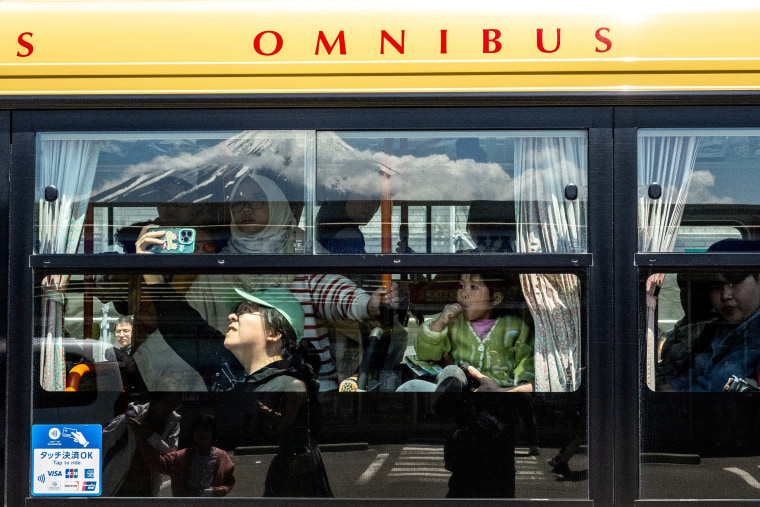
Last year, Japan had more than 25 million visitors, and the number this year is expected to surpass the 2019 record of almost 32 million, according to the Japan National Tourism Organization. And the government wants more tourists.
While booming tourism has helped the economy, it has brought complaints from residents in popular tourist destinations, such as Kyoto and Kamakura. In Kyoto, a famous geisha district recently decided to close some private-property alleys.
Locals are uncertain about what to do.
Motomochi said she cannot imagine how the black screen can help control the flow of people on the narrow pedestrian walk and the road next to it.
Yoshihiko Ogawa, who runs a more than half-century-old rice shop in the Fujikawaguchiko area, said the overcrowding worsened in the past few months, with tourists gathering from around 4-5 a.m. and talking loudly. He sometimes struggles to get his car in and out of the garage.
“We’ve never thought we’d face a situation like this,” Ogawa said, adding he is unsure what the solution might be. “I suppose we all just need to get used to it.”
The Associated Press

IMAGES
COMMENTS
Rome2Rio makes travelling from Japan to Australia easy. Rome2Rio is a door-to-door travel information and booking engine, helping you get to and from any location in the world. Find all the transport options for your trip from Japan to Australia right here.
Electronic Travel Authority (ETA) Citizens of Japan travelling to Australia for up to 3 months for tourism, visiting friends or family, or on business visits can apply for an ETA through the Australian ETA App. Download the Australian ETA app for free from the App Store (Apple) or Google Play store (Android).
The official Japan tourism website for Australians and New Zealanders by Japan National Tourism Organization (JNTO), the government tourism board. We use cookies on this site to enhance your user experience. If you continue to browse you accept the use of cookies on our site. See our Cookie Policy for more information.
Currently, leisure travel for Japanese tourists to Australia is restricted due to the ongoing pandemic. Only individuals with compelling or essential reasons are permitted to travel to Australia from Japan. It is advised to check the latest travel updates and contact the Australian embassy or consulate in Japan for specific travel requirements.
Australia and Japan are both parties to The Hague Convention on the Civil Aspects of International Child Abduction. ... Tourism. Japan National Tourism Organization (JNTO)'s Tourist Information Center accepts telephone enquiries 24 hours a day. Call (+81 3) 3201 3331.
Flights to Newcastle, Australia. $514. Flights to Perth, Australia. View more. Find flights to Australia from $295. Fly from Japan on Scoot, Jetstar, China Eastern and more. Search for Australia flights on KAYAK now to find the best deal.
By comparison, in 1997 some 101,460 Australians made the trek to Japan, of which just 41,520 were tourists. By 2016 the number had sky rocketed to 445,237 — of which 398,193 were tourists. That ...
The cheapest flight deals from Japan to Australia. Perth.$332 per passenger.Departing Tue, Jun 4, returning Tue, Jun 11.Round-trip flight with AirAsia X.Outbound indirect flight with AirAsia X, departing from Osaka Kansai International on Tue, Jun 4, arriving in Perth.Inbound indirect flight with AirAsia X, departing from Perth on Tue, Jun 11 ...
Australia-Japan Defence Ministers' Meeting - the Deputy Prime Minister and Minister for Defence, the Hon Richard Marles MP. 19 October 2023. ... For Australians travelling to Japan or planning to travel to Japan, please refer to the Australian Government's Smartraveller website and the Japanese Government's Immigration Services Agency of ...
Japan's tourism rebound has been felt deeply in the capital. Sydney-based Yu Yamamoto, Japan country manager for Australian coffee chain Single O, says business is booming for the brand's ...
Flex your dates to secure the best fares for your Japan to Australia ticket. If your travel dates are flexible, use Skyscanner's 'Whole month' tool to find the cheapest month, and even day to fly from Japan to Australia. Compare cheap Japan to Australia flight deals from over 1,000 providers. Then choose the cheapest or fastest plane tickets.
This paper focuses mainly on inbound travel from Japan to Australia, which is the remit of Tourism Australia. Over the 5 year period to 2019, inbound tourism from Japan generated $8.8b in spend, with over 2.1m visits, of whom 48% were repeat travellers. Repeat travellers tend to spend slightly more per visit, but even more
In 2018, Japan was the fifth largest source of tourism for Australia, with 484,000 Japanese citizens visiting Australia that year. It placed behind the United Kingdom, the United States, New Zealand and China. ... Japan-Australia Joint Declaration on Security Cooperation, Tokyo, 13 March 2007, 安全保障協力に関する日豪共同宣言 ...
Visit the majestic Osaka Castle Credit: @wondrous_rose. Flights from any major Australian city to Tokyo or Osaka range from 9.5 to 11 hours. Sydney-Tokyo flights, for example, typically take around nine hours and 30 minutes. In comparison, flights from Melbourne to Tokyo are 10 hours and 50 minutes long.
A week in Japan can cost you about $0.00 (per person), while a week in Australia may cost you around $1,154. These differences become even more noticable if you plan to spend a longer time in the country. 10 days, two weeks, or even one month of travel to Japan or Australia can really add to your travel budget. Accommodation is often cheaper in ...
Spotlight on Japan. 30 March 2021. Derek was appointed as Tourism Australia's Country Manager in Japan in March 2020. With a strong commercial background in aviation and tourism, Mr Baines brings more than 20 years of experience to the role.
The Digital Assistant can help you find information on Australian visas, citizenship and border entry. Visit the Immigration and citizenship website and click the Ask a question button to get started. Global Service Centre. If you require additional information, you may telephone the Global Service Centre on +61 2 6196 0196, Monday to Friday ...
This is equivalent to 6 993 kilometers or 3,776 nautical miles. Your trip begins in Japan. It ends in Australia. Your flight direction from Japan to Australia is South (-175 degrees from North). The distance calculator helps you figure out how far it is to get from Japan to Australia. It does this by computing the straight line flying distance ...
The Aussie Specialist Program (ASP) is the primary platform for Tourism Australia to train and develop front line travel sellers to best sell Australia. As at November 2021, there were 1,670 qualified Aussie Specialists in Japan. As part of this program, Tourism Australia with State, Territory and Regional Tourism Organisations provide ...
Series four of Race Across the World sees the five times travelling around South East Asia, from Japan to Indonesia: Here's the full route they take. Don't worry, this article isn't as long as ...
Travel from Australia to Japan is currently possible, but restrictions and conditions apply due to the ongoing COVID-19 pandemic. The Australian government has imposed strict travel restrictions for Australians travelling overseas. This includes a ban on all non-essential travel abroad until further notice.
Japan is far from alone in grappling with this issue. Barcelona has removed a bus route from map apps due to overcrowding. Venice just introduced a €5 ($8.16) entrance tax during peak hours .
Market Insight Snapshots. We acknowledge the Traditional Aboriginal and Torres Strait Islander Owners of the land, sea and waters of the Australian continent, and recognise their custodianship of culture and Country for over 60,000 years. Tourism Australia's activities in Japan and South Korea are managed from offices in Tokyo and Seoul.
One of Japan's busiest tourist periods of the year ended on Monday. Golden Week — which ran from April 27 to May 5 — coincided with multiple public holidays and near-perfect spring weather.
"In Tokyo, Japan's capital - a meal for two at a mid-range restaurant costs around 7000 yen or $68, a bottle of domestic beer sets you back around 317 yen or $3 and a travel pass to explore ...
According to English Australia, the national peak body for more than 100 English language colleges for international students, visa grants plummeted by 68% in December 2023 compared with the ...
Last year, Japan had more than 25 million visitors, and the number this year is expected to surpass the 2019 record of almost 32 million, according to the Japan National Tourism Organization. And ...
Japan has been experiencing overtourism issues since reopening post-pandemic in late 2022. March 2024 was the country's all-time biggest tourism month ever, with more than three million foreign ...